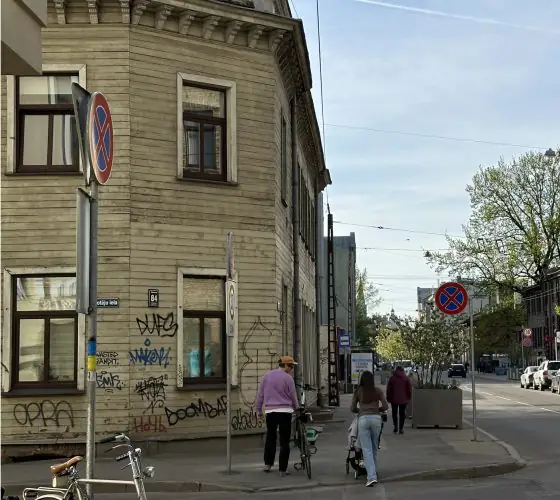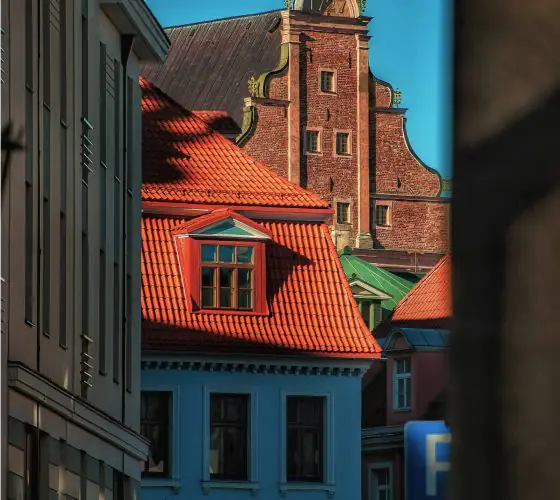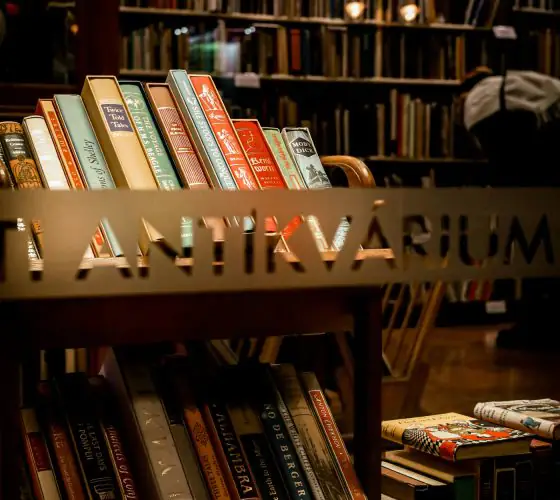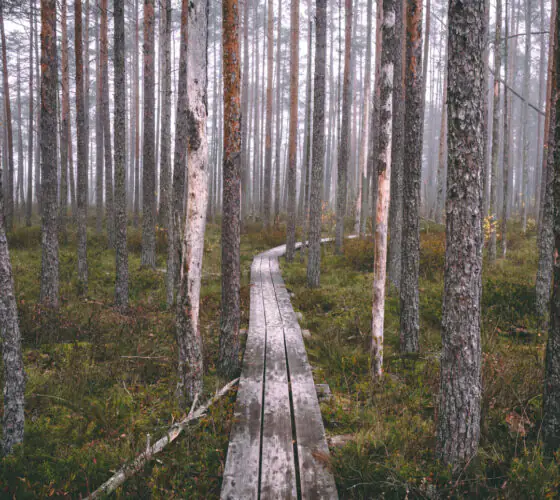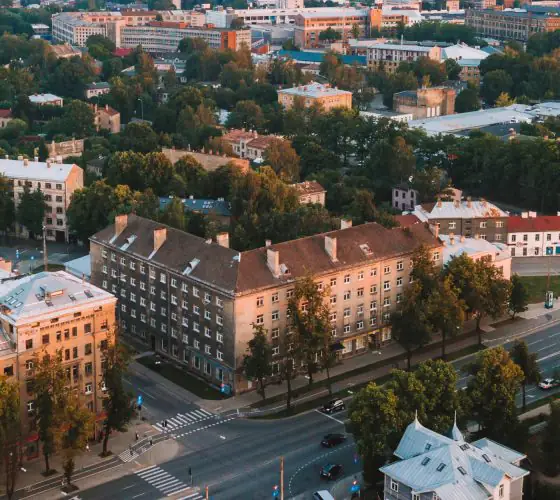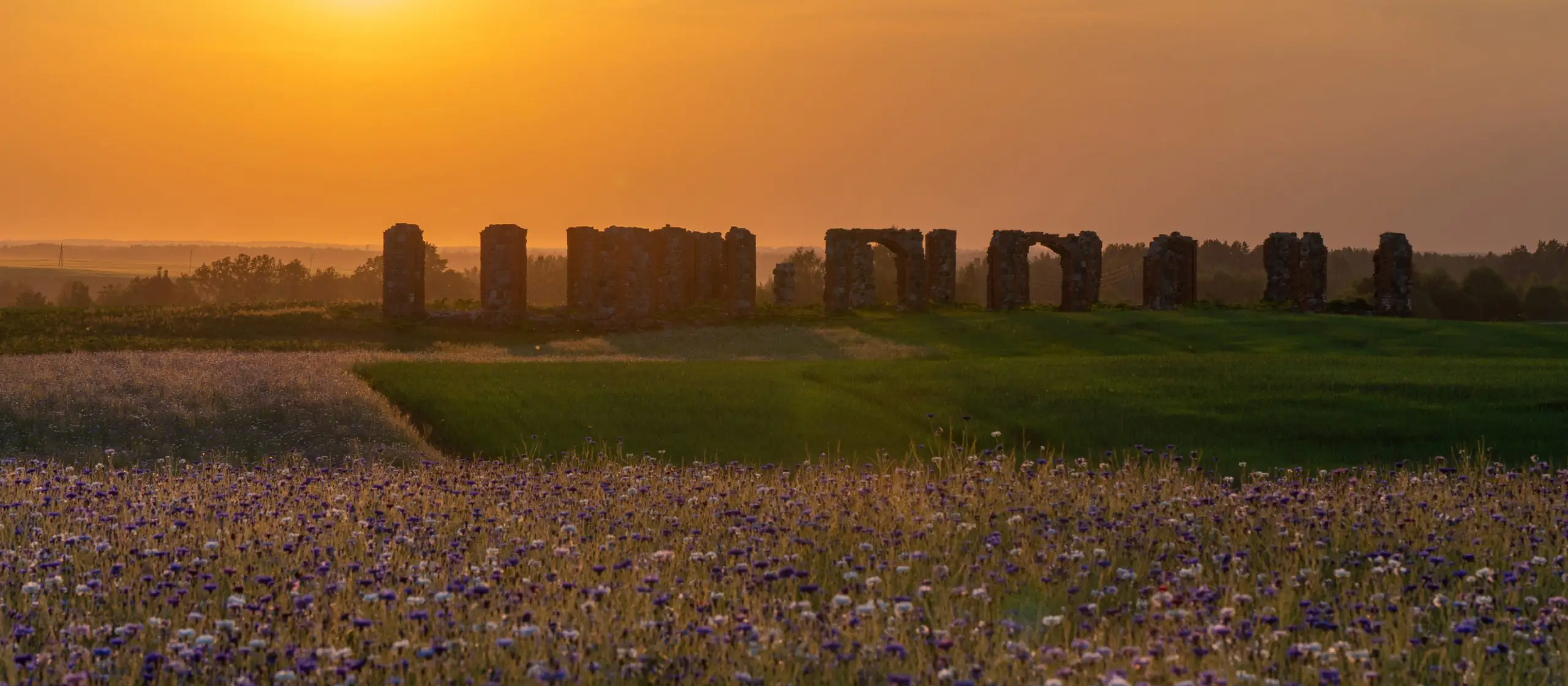
What to see
Smiltene Stonehenge
The local Stonehenge is not as ancient as the English Stonehenge, but it is as romantic and visually appealing as its namesake.
In the middle of the hilly fields there are vertical boulder poles—the remains of a traditional barn. Right on its ruins, storks nest and raise their chicks. The unofficial landmark has long been one of the symbols of Smiltene and is popular with locals and tourists.
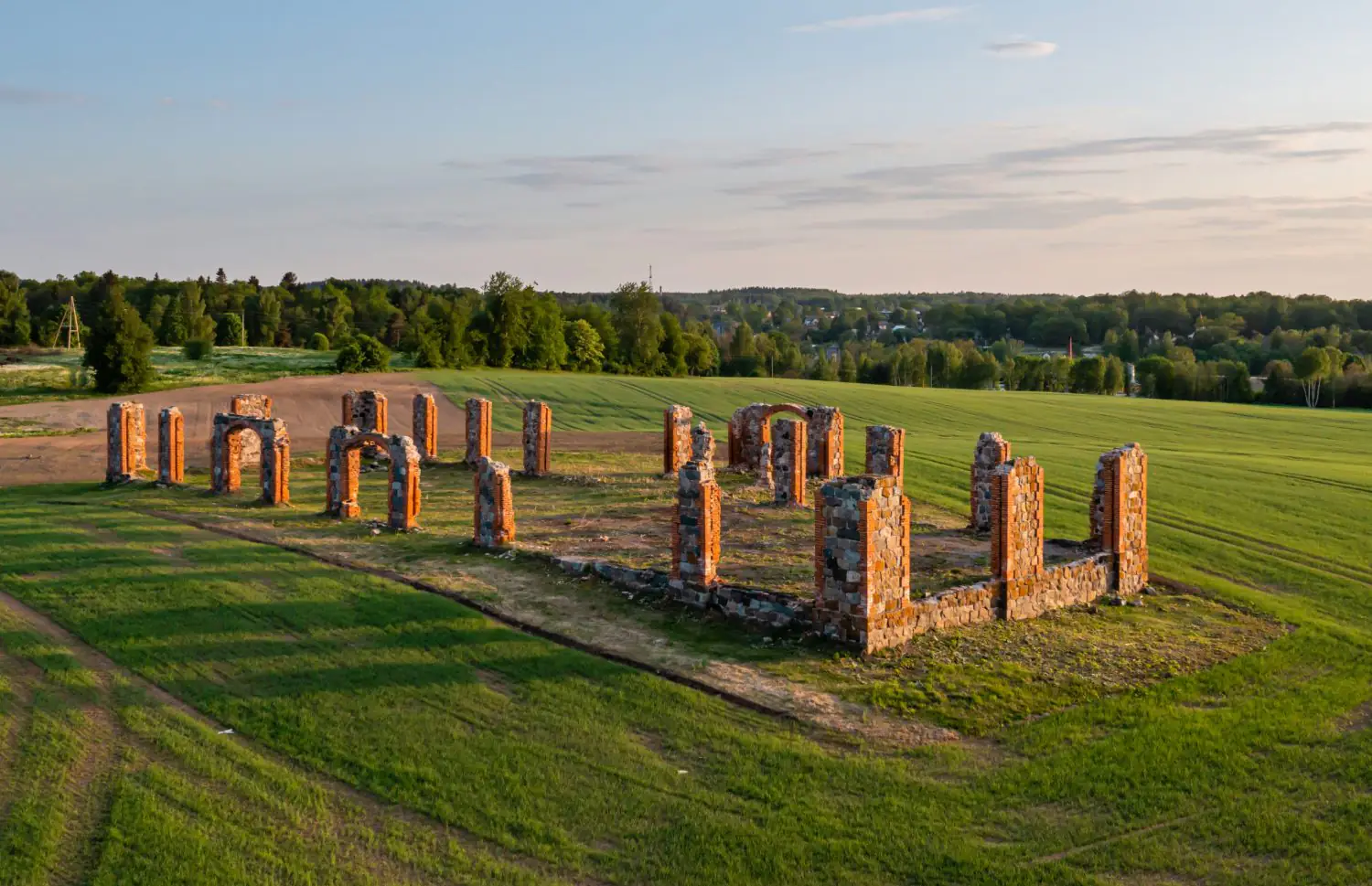
This place is especially beautiful during the cornflower blooming period—approximately from the end of June to the beginning of August. The field is literally drowned in blue color. Sometimes you can also see bright yellow sunflowers.
The castle in Rauna
The massive boulder walls of the ancient castle of the archbishop of Riga suggest that they used to be a reliable defense for its inhabitants. The defensive structure was severely damaged twice: during the attack on Livonia by the Russian armies of Ivan the Terrible and during the Great Northern War. Now it is in a mothballed state.
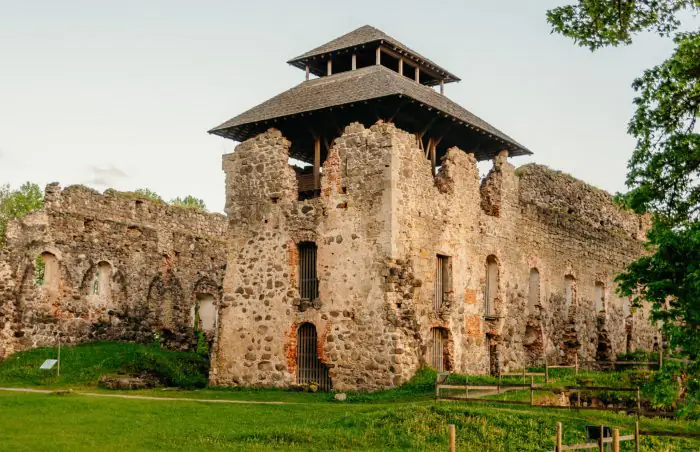
facebook.com/visitSmiltene
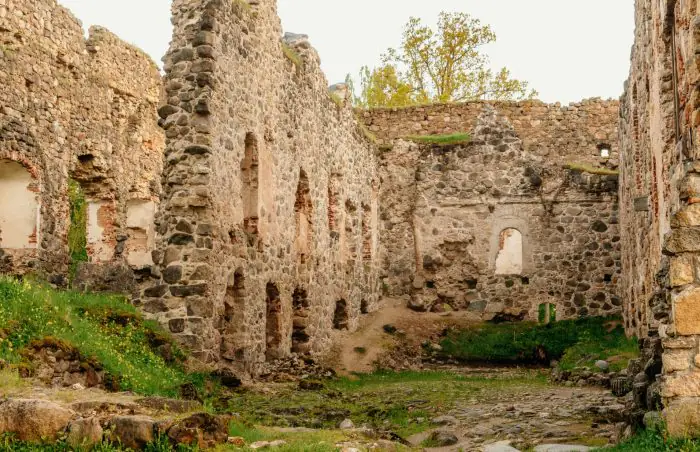
facebook.com/visitSmiltene
The infrastructure around the castle is well-maintained: there are exhibition stands and signs for those wishing to learn more about the history of the castle, as well as a public toilet. You can enter the castle tower, there is an information audio booth on the second floor and an exhibition hall with antiquities found here on the third floor.
Windmills and watermills
In the middle of fields and forests, the Strante windmill stands on a small hill. It was built around 1900 and not much is known about its history. In 2018, it was restored: the roof, stairs, window frames and new flooring were replaced. There is now a hunting club inside.
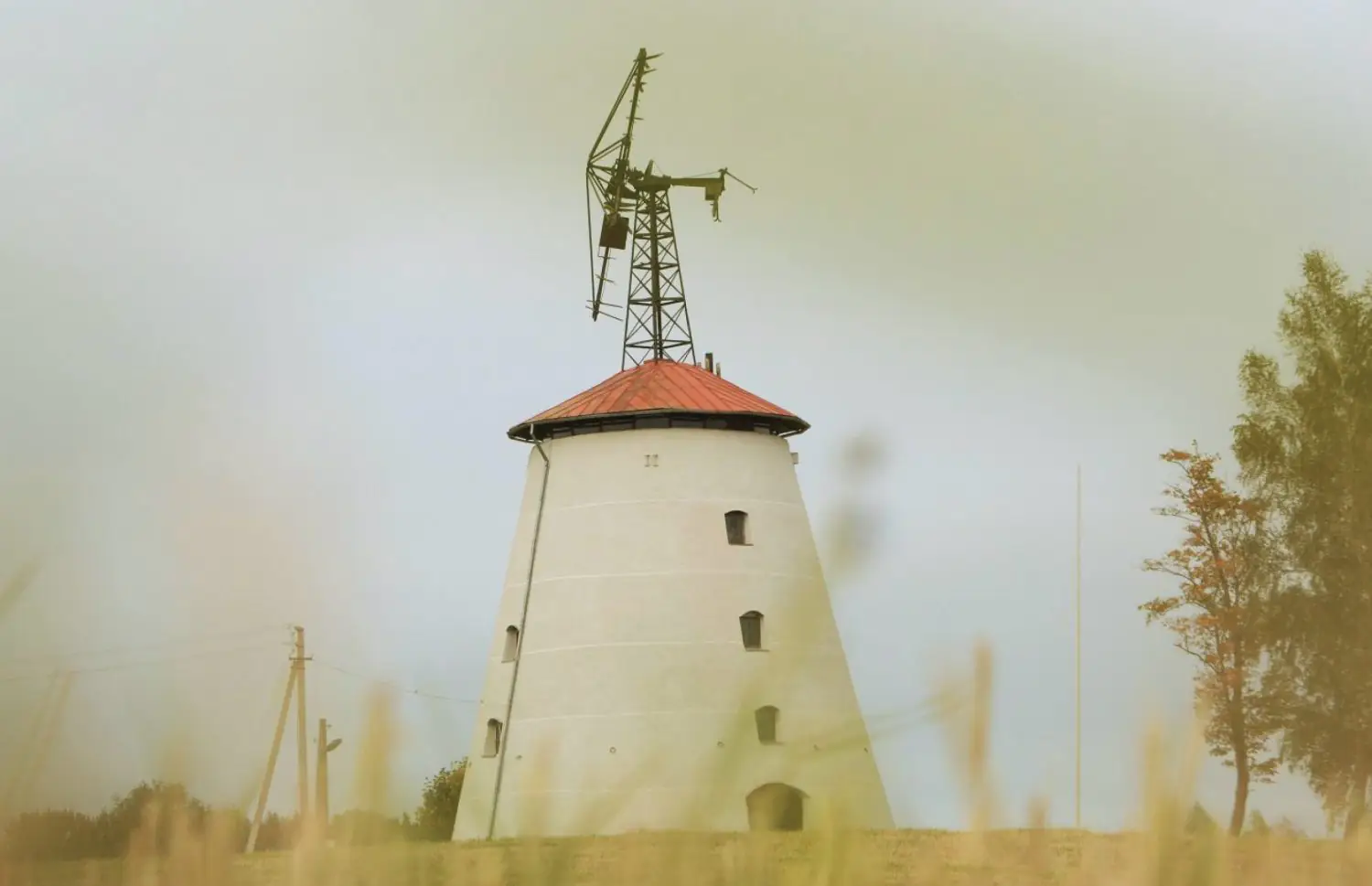
visit.smiltenesnovads.lv
The picturesque ruins of a Dutch-type windmill can be seen on the territory of the Zvārtava manor. The mill was built in 1803 as part of the manor complex. During the Soviet years, the building was partially dismantled and lost its recognizable original appearance—in fact, only the stone base remains. Inside, the wooden vault and some mechanisms have been preserved. In 2002, the building was reconstructed.
In the village of Vidaga there are picturesque ruins of a dam with a boulder building and a tall brick chimney. The Gauja River flows nearby, over which there is a suspension bridge. It was originally built in the 1970s and rebuilt after a major flood in 2010.
The watermill in Rauna now serves as a hydroelectric power plant and is owned by a private owner. The first dam on the site dates back to the 17th century. The present form of the structure was acquired in 1887, and later the mill was equipped with turbines for power generation. The stepped cascade of water looks spectacular against the background of the boulder walls.
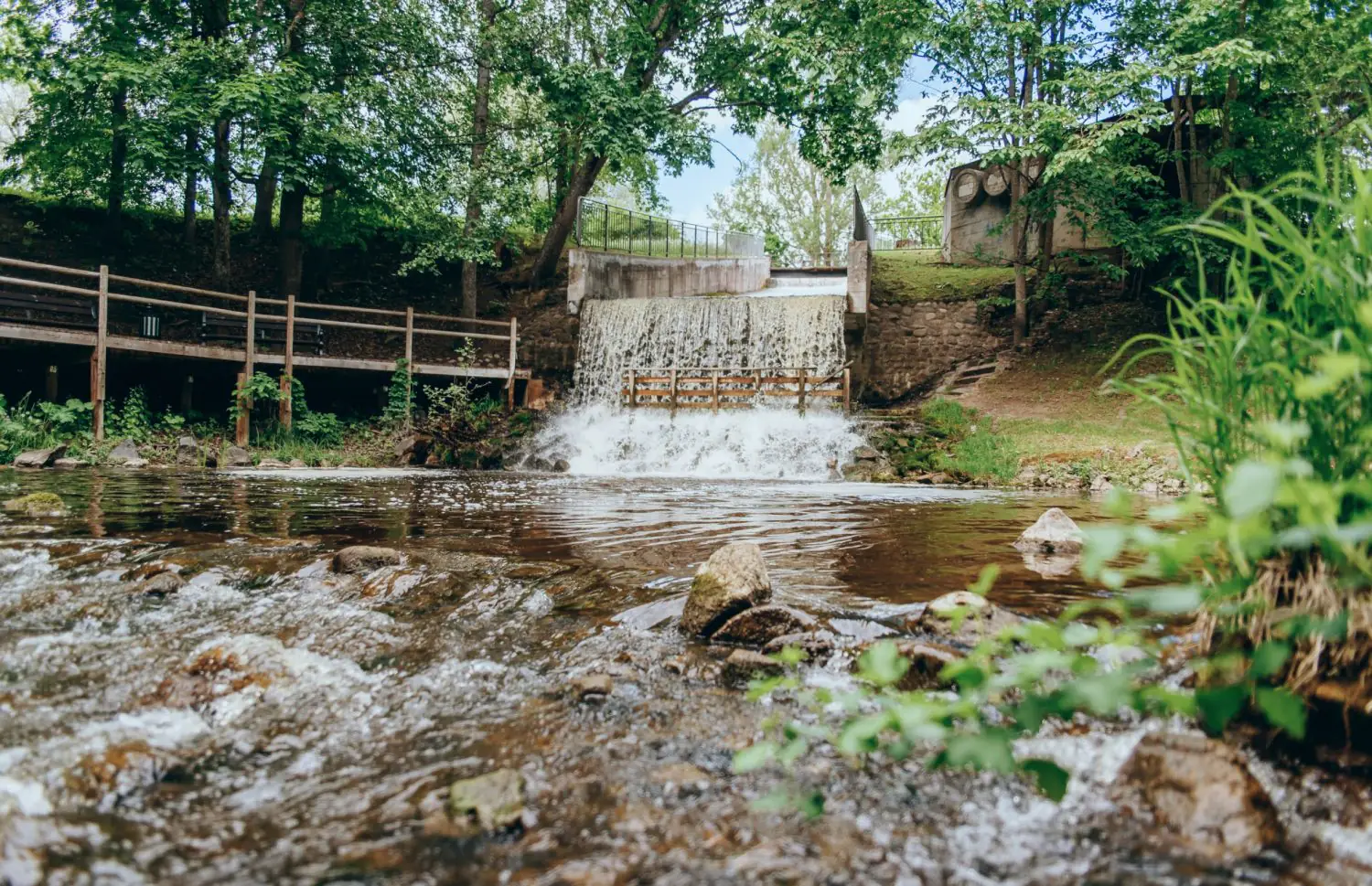
facebook.com/visitSmiltene
The lake at Tiltleja mill was formed by damming the Abuls River, on the northern edge of the city. It is a fairly wide body of water, bordered on the eastern side by the city gardens. Ducks, swans and other water birds swim along the water surface of the pond. There are quite a few fish in the water. The watermill operated until 1972, then it was converted into a weaving workshop of the local mill.
Manor houses
The Gatarta Manor is nestled on one of the hills of the Vidzeme Uplands in the south of the Smiltene municipality. The facade of the manor is in the classicism style. Its owner was the famous navigator and ruler of Russian America, the Baltic German Ludwig Karl August von Hagemeister. The manor used to amaze with its luxurious decoration and number of additions. Now it is still not restored, but this only gives it a special charm. People note that the current owners of the manor are very welcoming to all guests.
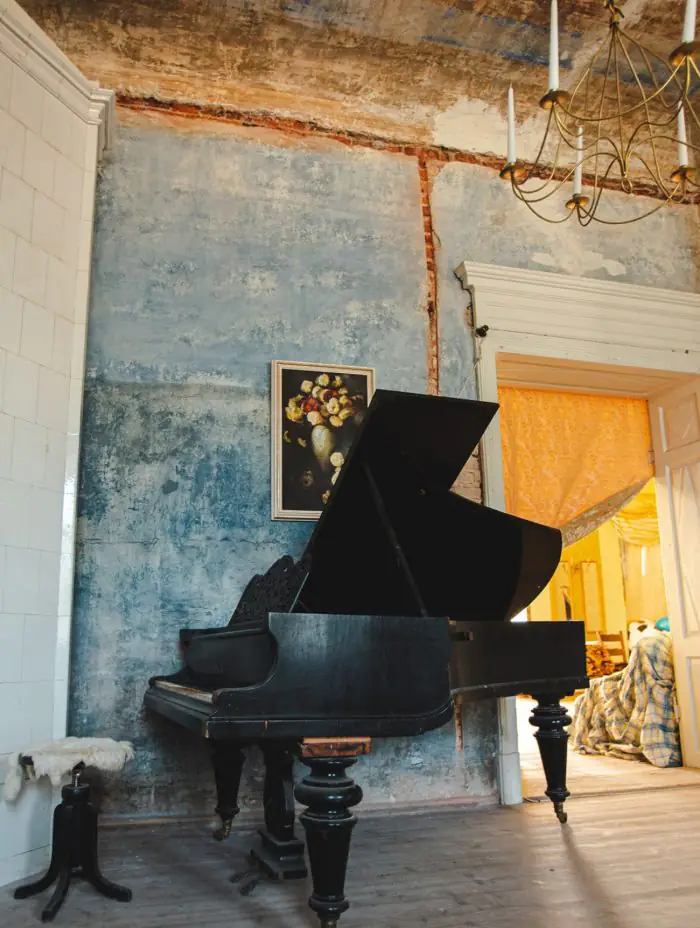
facebook.com/gatartasmuiza
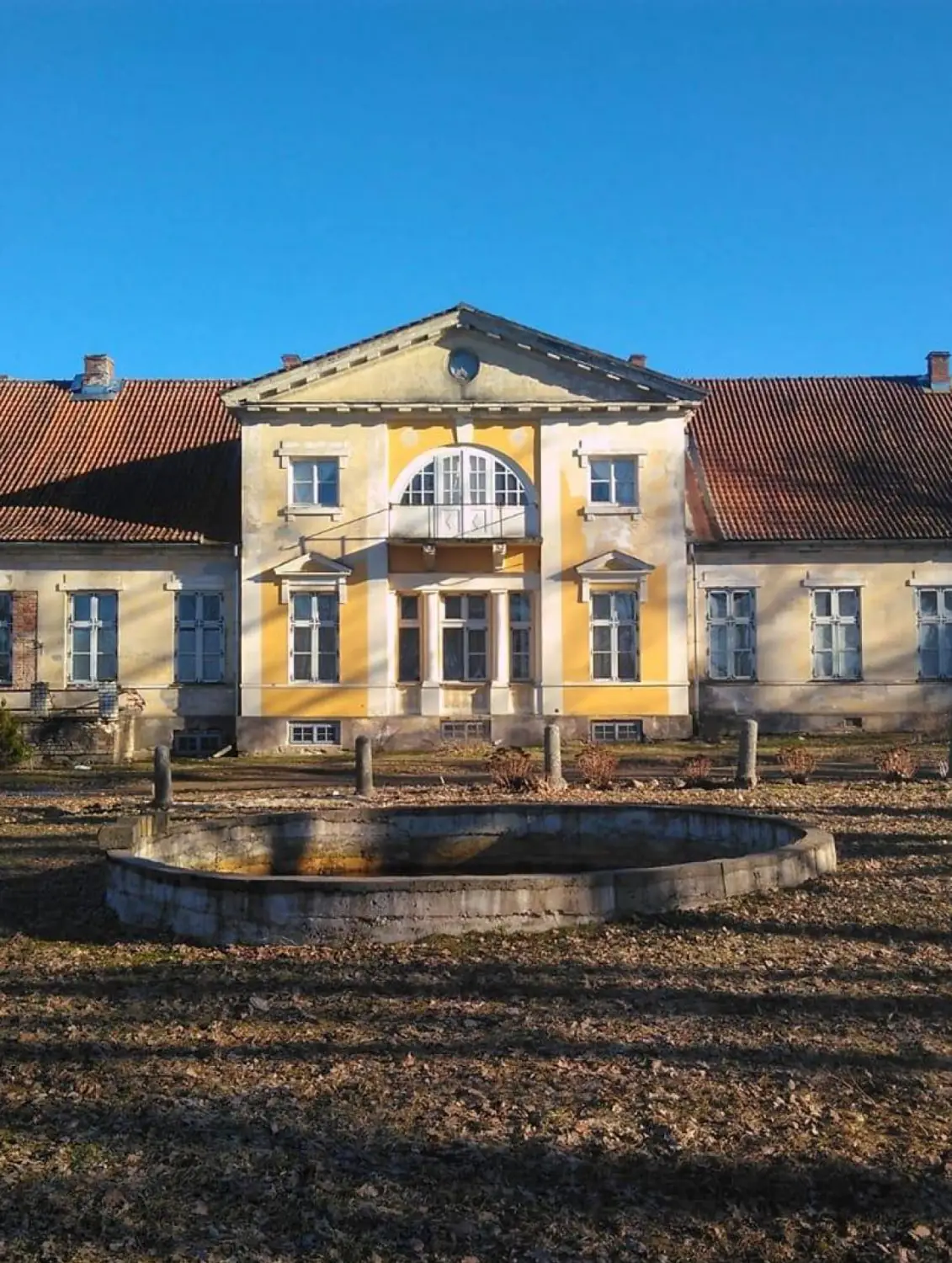
facebook.com/gatartasmuiza
The ancient 16th century Briņģi Manor is situated among hilly fields on the banks of the river Palsa. Nowadays it is used as a private residential house, but the owner is happy to invite guests for a cup of tea. It is ideal for lovers of meditation in the rural Latvian wilderness. Here you will feel the warm and soulful charm of rural peace.
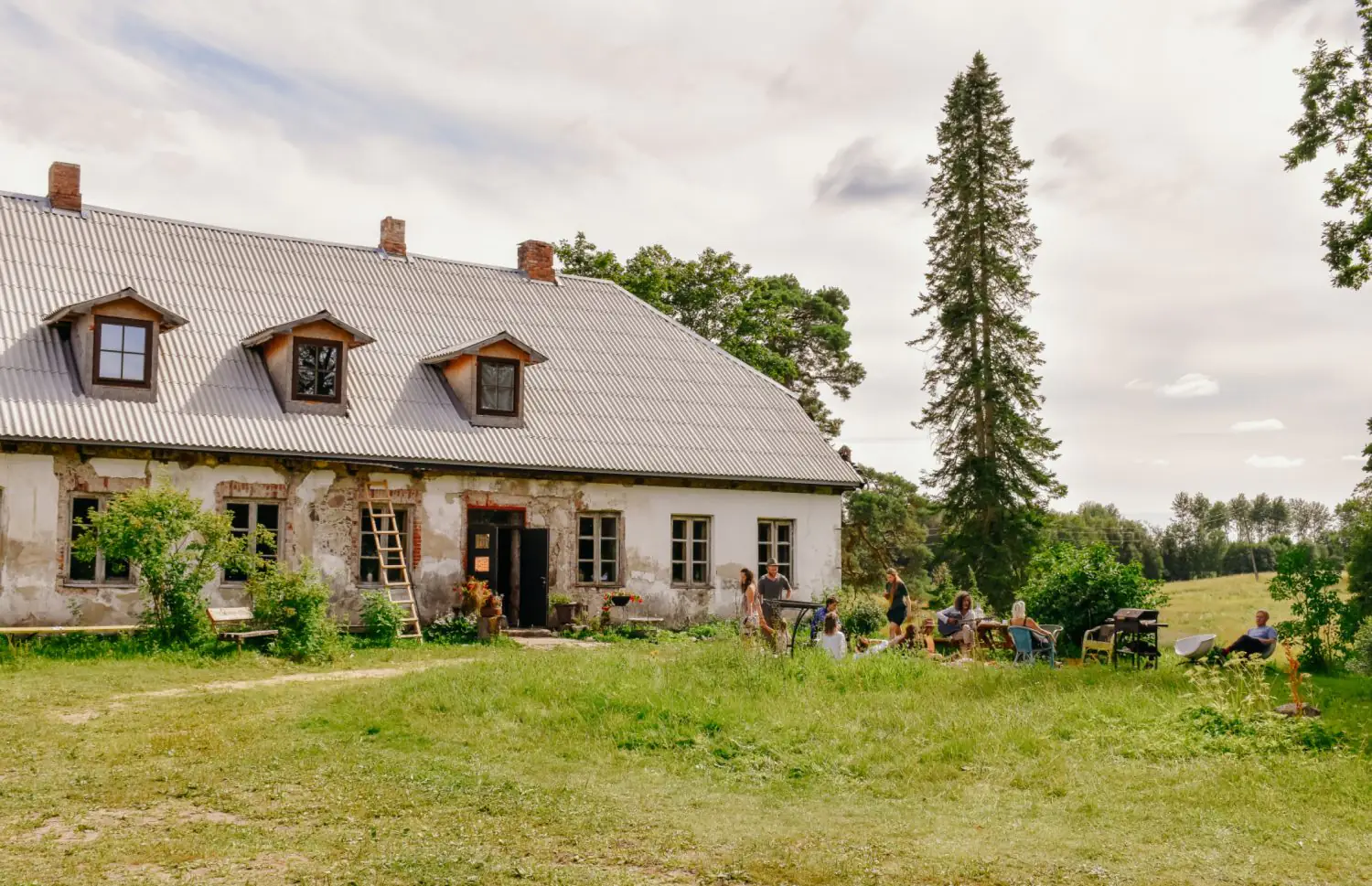
visit.smiltenesnovads.lv
Branti Manor offers many options for active recreation: excursions and master classes are organized, traditional Latvian dishes (both simple and aristocratic) are prepared, banquets and celebrations are arranged. The estate positions itself as a national-romantic place where you can deeply experience the spirit of Latvia.
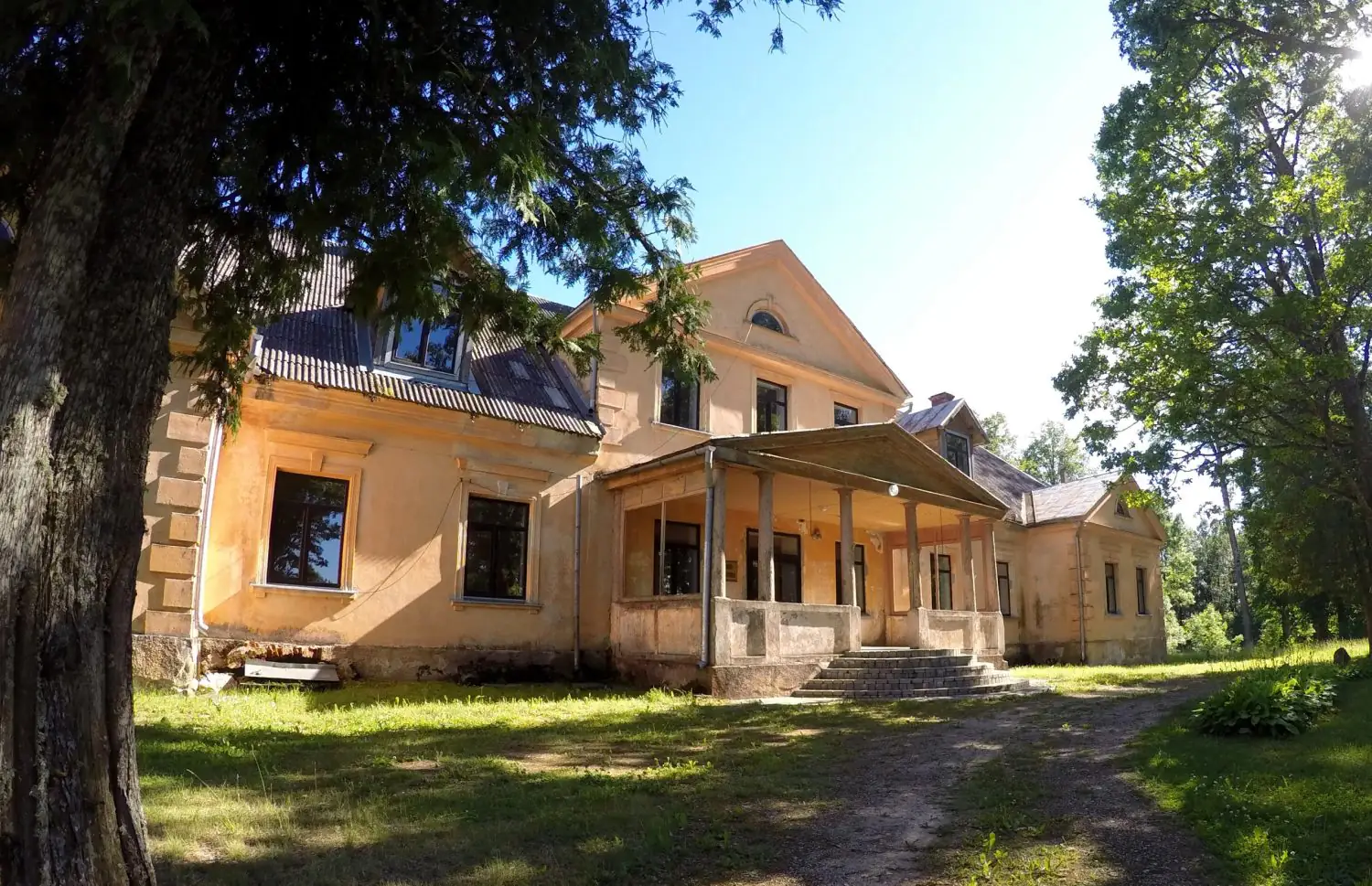
visit.smiltenesnovads.lv
Gaujiena Manor is primarily associated with the name of Latvian composer, critic and music educator Jāzeps Vitols. He brought up many outstanding composers and can rightfully be considered the father of music in the Republic of Latvia. For his merits he was given a picturesque place with as many natural beauties as possible. On the territory of the manor there is a museum dedicated to its famous owner.
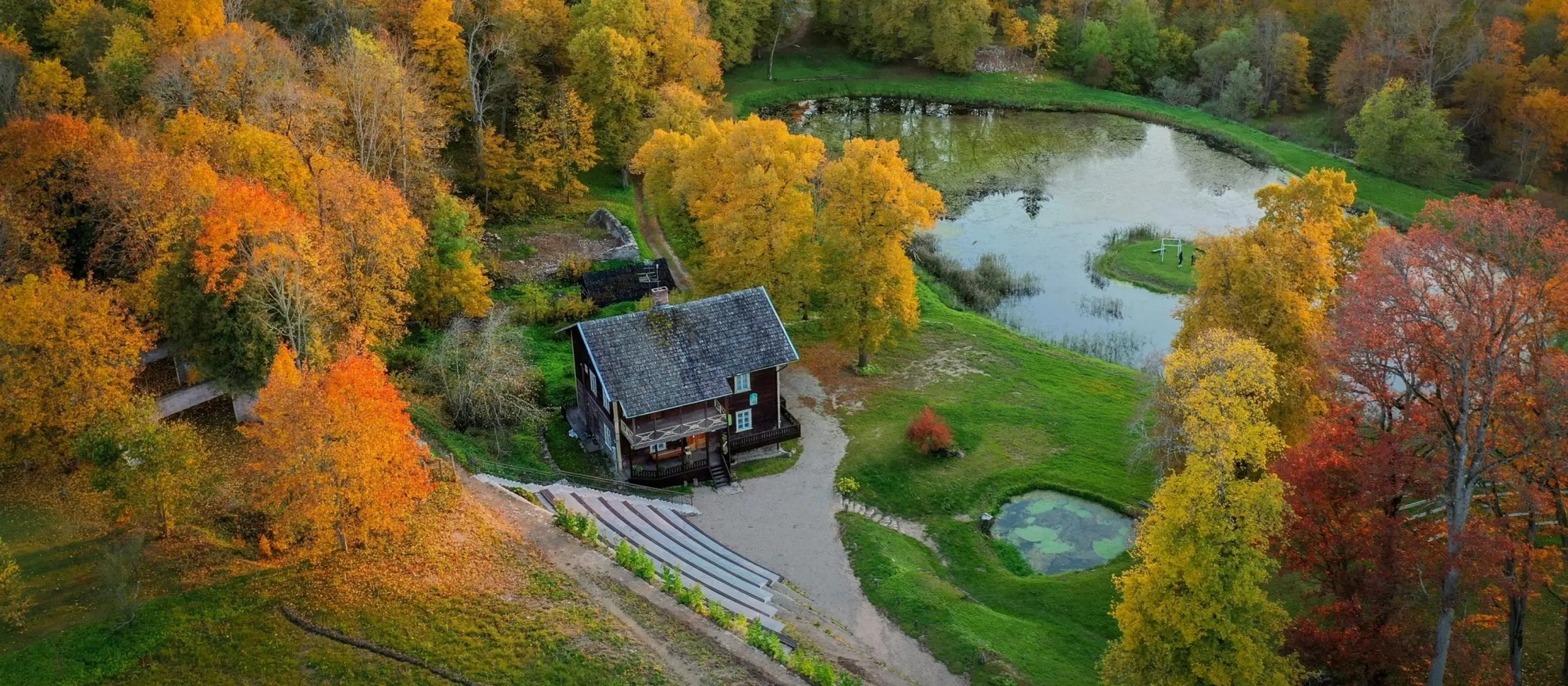
visit.smiltenesnovads.lv
Zvārtava is located nearby on the shores of the lake. Here you can stroll through the picturesque natural surroundings and enjoy the beauty of the architectural forms of the neo-Gothic manor house.
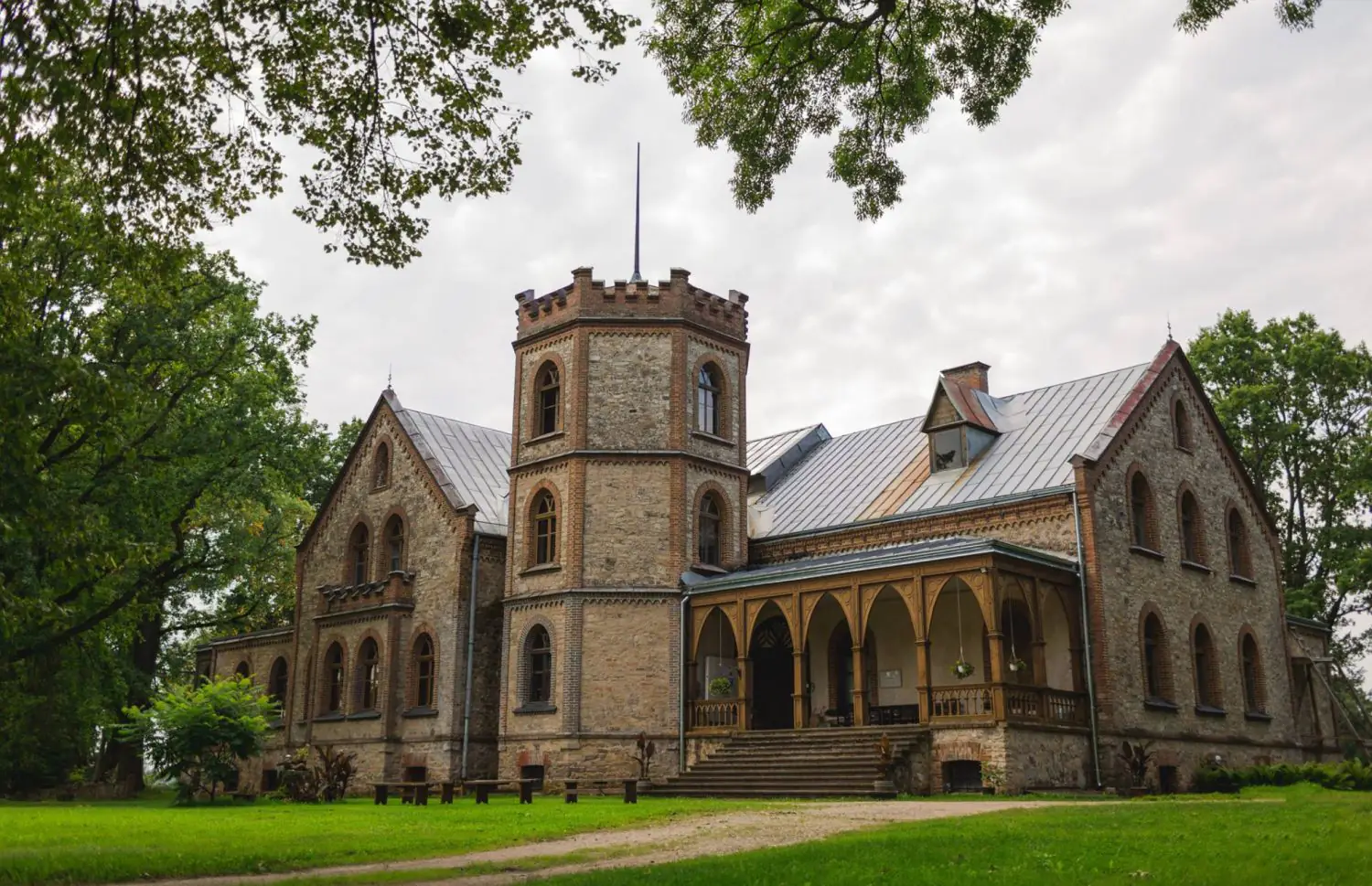
zvartavaspils.lv
The two-storey limestone building is richly decorated and the dominant feature is the polygonal tower. On the second floor is a rare phenomenon for manor houses—a light dome with stained glass windows.
On the first floor there is a dance hall and a dining room with expressive furniture. Since 1970, the manor has belonged to the Artists’ Union of Latvia, which still organizes exhibitions, symposiums and events here.
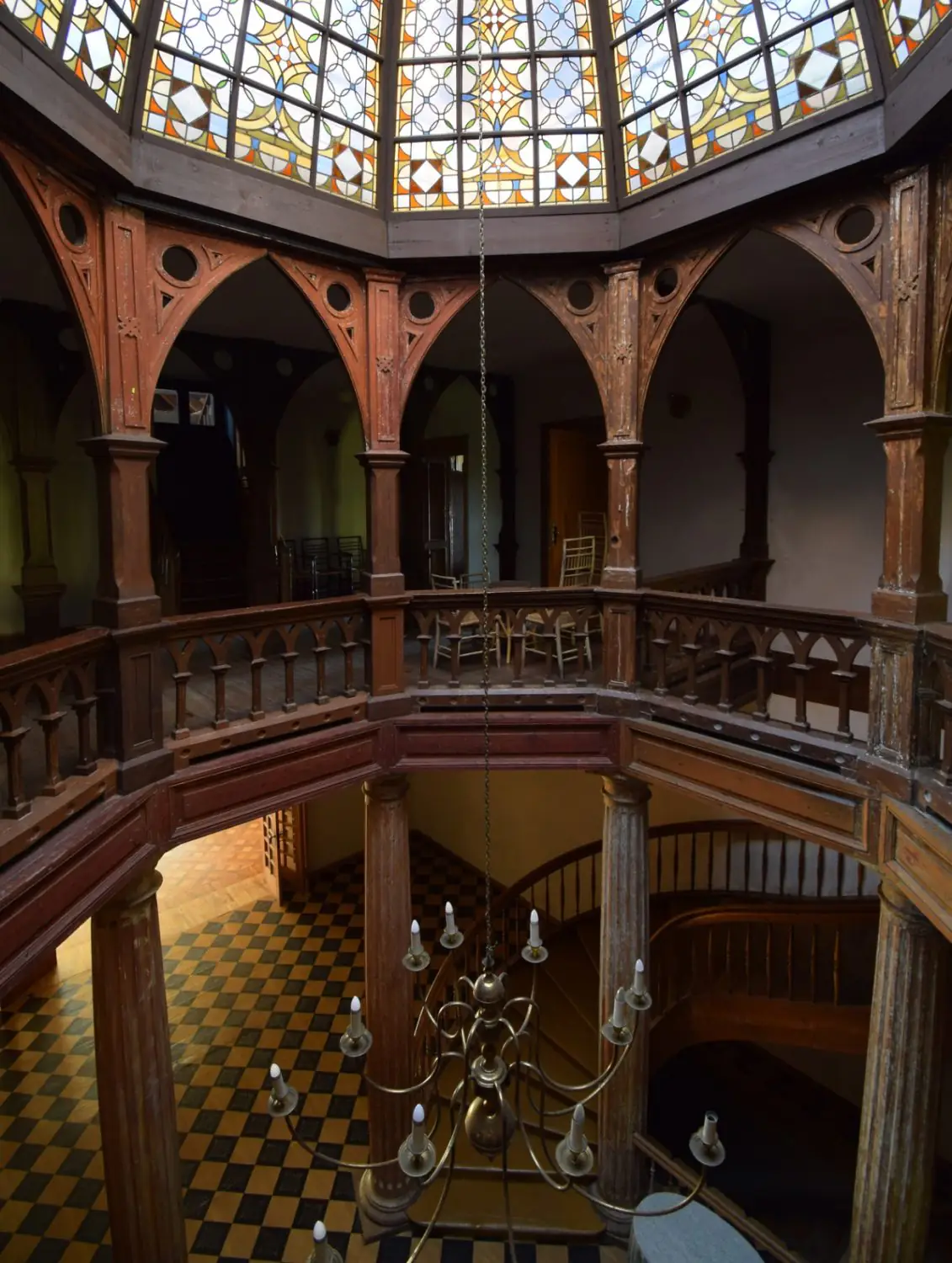
zvartavaspils.lv
In the east of the region there is the village of Trapene, near which there are several remarkable places. Entering these places from the west, you will pass through the longest larch alley in Latvia. They were planted here in 1890. When you reach the end of the alley, you will find yourself in front of the manor house. Right next to the manor park is the Fazāni museum of old things, which has a huge collection of exhibits from various eras.
Away from the village is the childhood home of the famous Latvian poet Ojārs Vācietis, which is now the site of the Stādzēni guest house. The interiors of the house have been rebuilt, but the spirit of the place and time in which he grew up has been preserved in the courtyard and outbuildings.
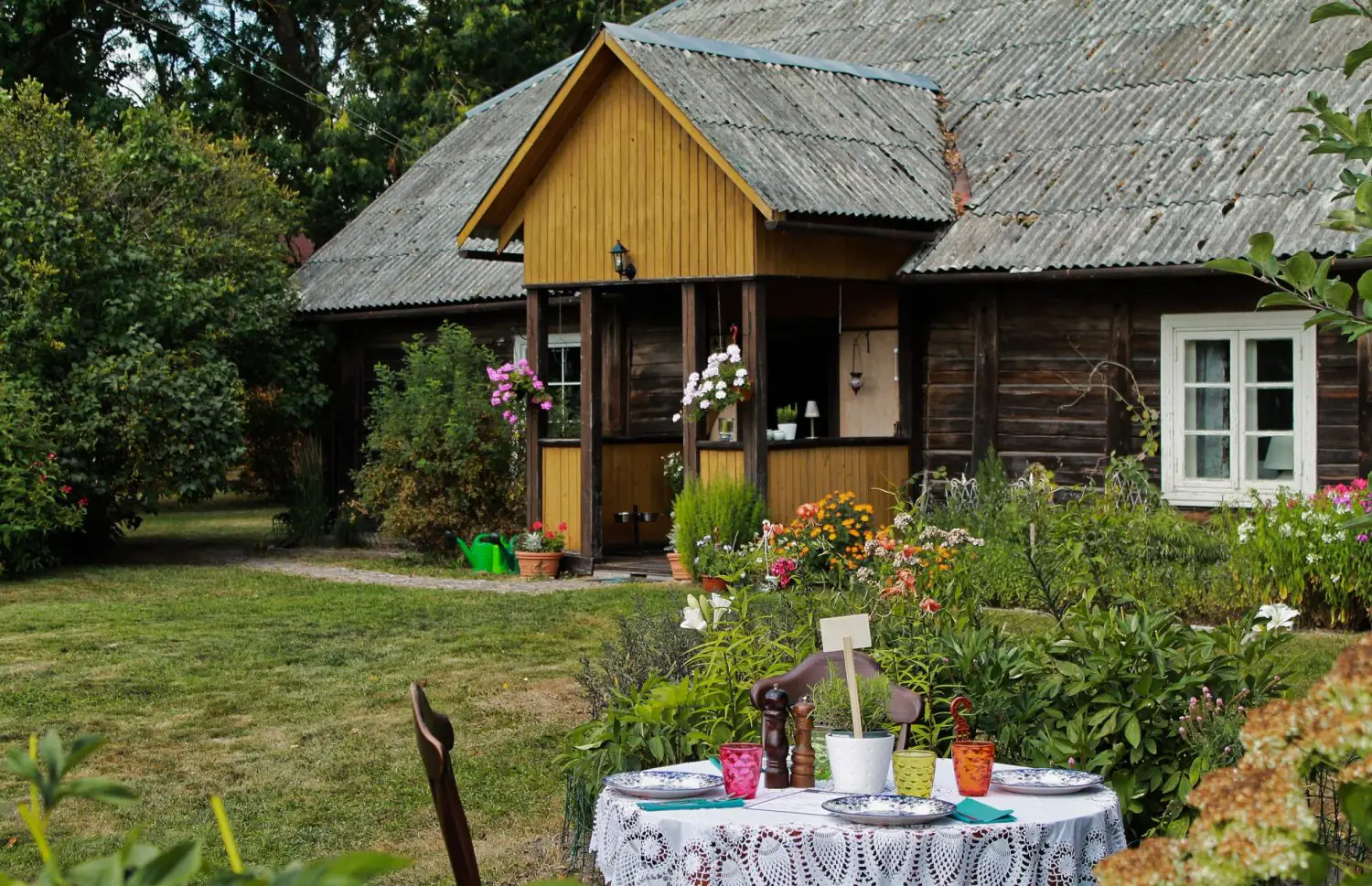
facebook.com/visitSmiltene
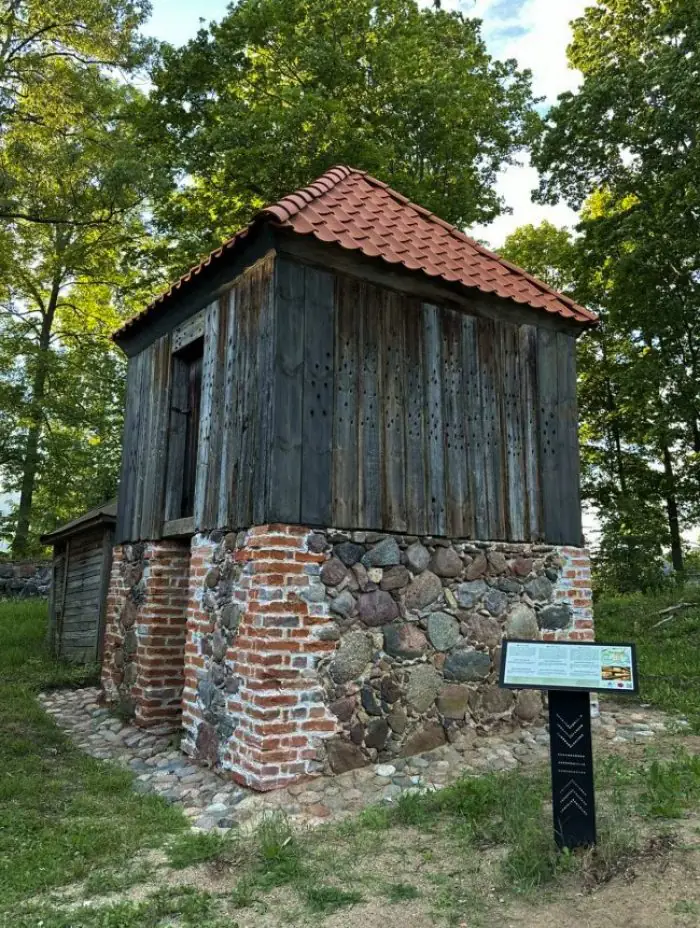
visit.smiltenesnovads.lv
The large manor complex is located within the city limits of Smiltene. It was built at the end of the 18th century, when the property belonged to the governor-general of Vidzeme. The castle of the archbishop of Riga, built in 1370, once stood on this place, but now there are only small ruins of it. On the territory of the manor there is an ancient cheese factory, perforated with many holes for drying cheese — the only surviving of its kind. Here you can book a tour and taste local delicacies.
The manor in the village of Mēri dates back to the mid-19th century, and the main building was built in 1905 in the Neo-Renaissance style. The main building has a picturesque silhouette with a tiled roof, and inside there are fragments of once luxurious interiors.
The Smiltene District Museum is now housed here, and exhibitions devoted to history, culture and art are organized. One of the rooms can be rented for your own event.

stock.adobe.com
Aumeisteri Manor, built in 1896, is located on the north-eastern edge of the region, in a quiet corner away from towns and highways, on the bank of a picturesque pond. It is not in the best condition, and many of its buildings require restoration. However, this place is worth a visit—the spirit of old times and Latvian pastoral life of the past is well felt here. Take a walk in the homestead park, see the ruins of the old Lutheran church and, if you wish, stay overnight in a local guesthouse.
The Palsmane Manor of the second half of the 19th century is eclectic, with a central tower in the middle and strict symmetry. After independence, the building was nationalized and used for educational purposes. Now the building houses a boarding school.
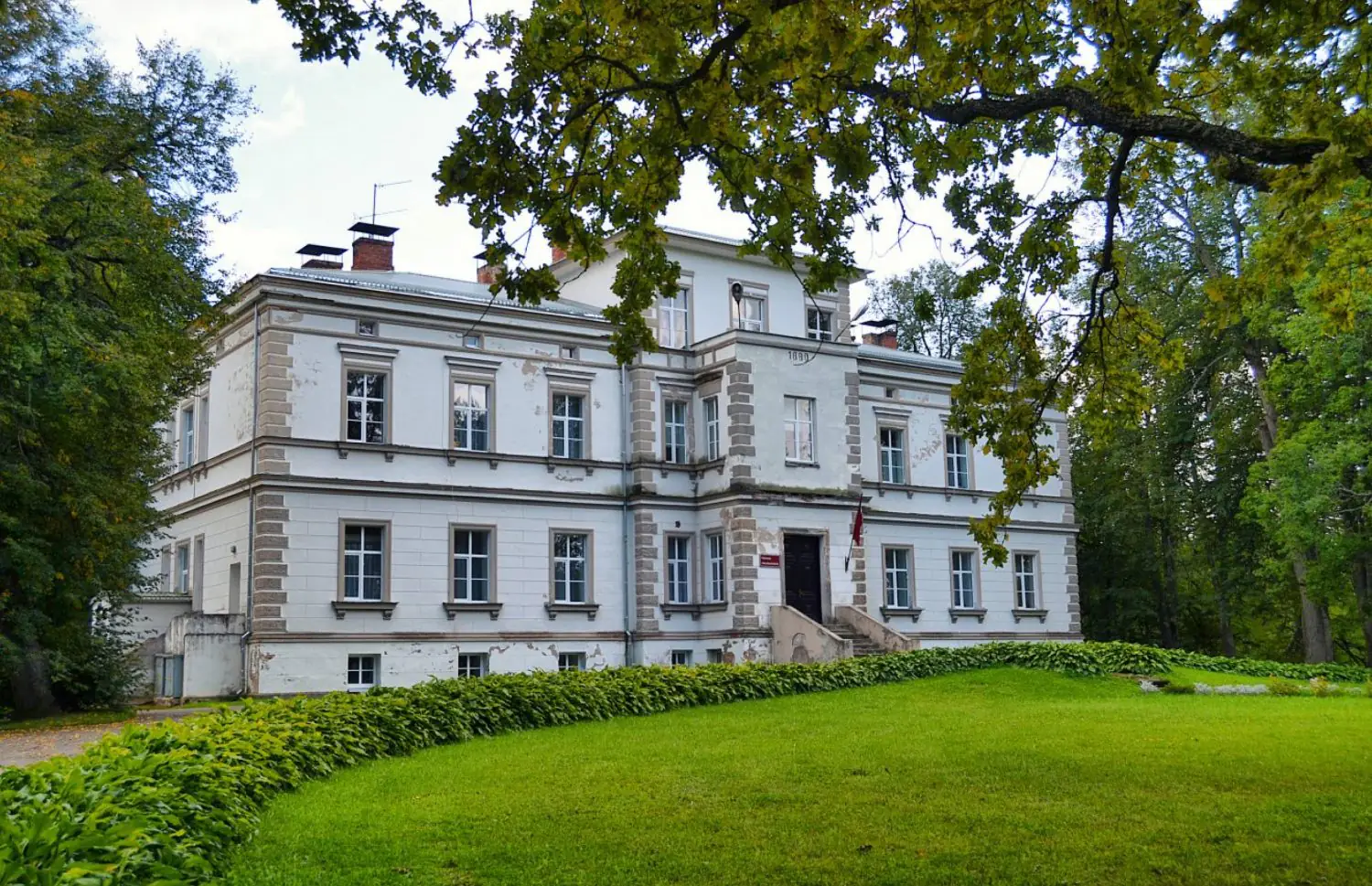
visit.smiltenesnovads.lv
Churches
One of the most important sights of Smiltene is the cross-shaped Lutheran church, consecrated in 1859. The windows are made in Gothic style, the interior is an example of quality woodwork by Latvian craftsmen. The upper part of the walls is decorated with national ornaments. The altarpiece “Resurrection of Jesus” by Ernst von Liphart was donated to the church by Mrs. Bandava, who was one of the owners of the Smiltene Manor. And the church clock was a gift from former president Kārlis Ulmanis. Throughout its history, the church has been notable for its outstanding pastors.
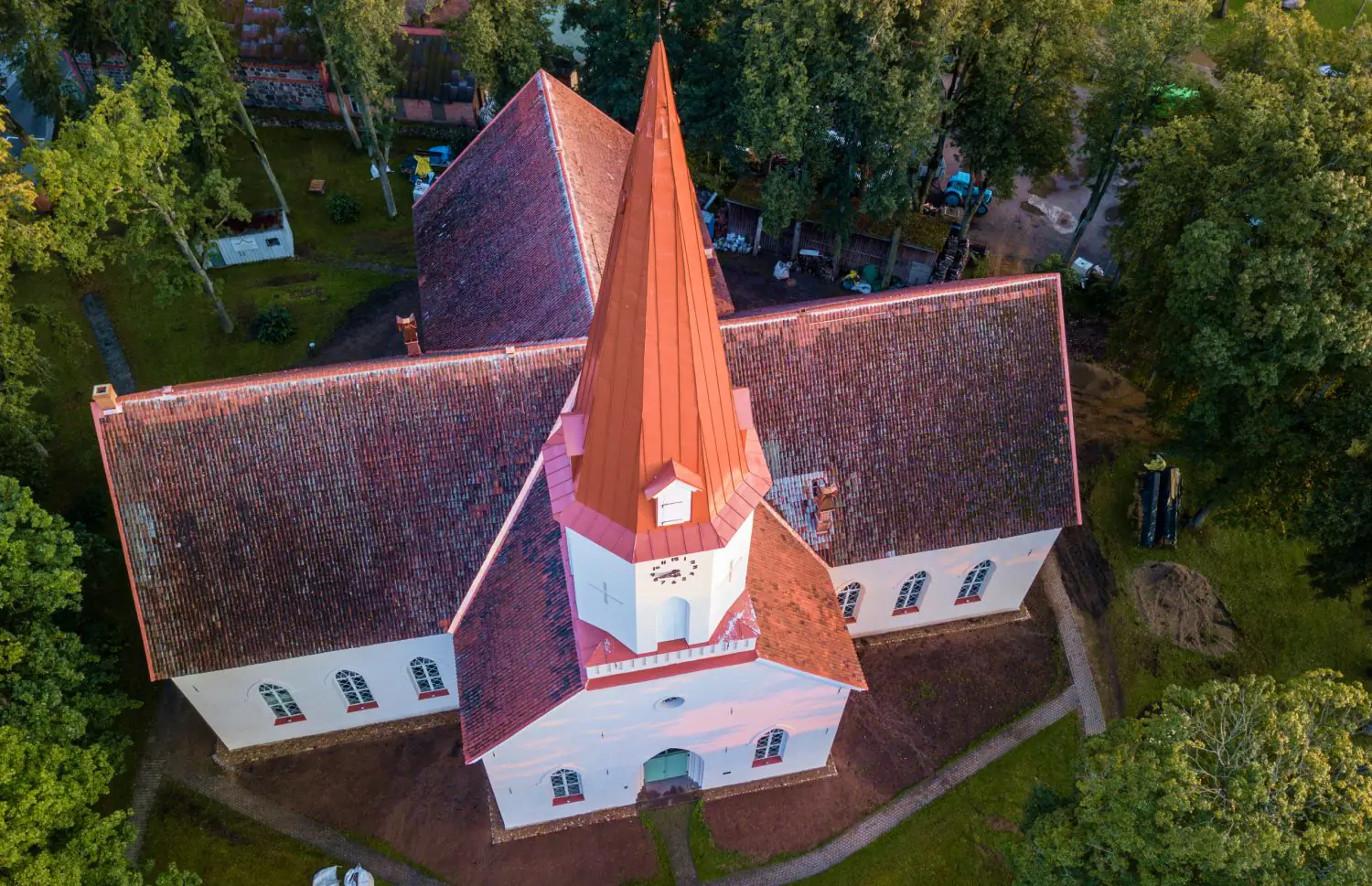
stock.adobe.com
The Lutheran Church in Palsmane was built in 1817 in the shape of an octagon. Earlier this type of religious buildings was common in Vidzeme, but is now a rarity. In 1928 the bell tower was rebuilt and the dome was replaced by a pointed roof. The altarpiece is a work by the Italian painter Belīni, “The Garden of Gethsemane”. Some local pastors were prominent figures, such as Svante Dres, many of whose works can be found in old songbooks.
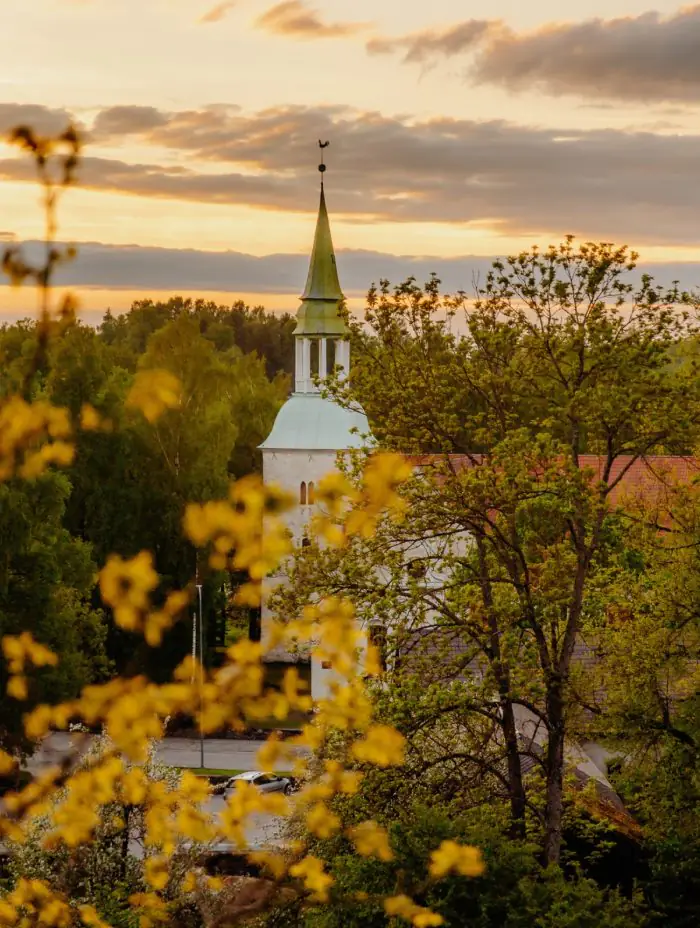
facebook.com/visitSmiltene
One of the most important monuments of medieval sacred architecture in Latvia is located in Rauna. The archbishop of Riga ordered the construction of a church in this place as early as 1262. The first mention of this church dates back to 1442, but since then it has been rebuilt and restored several times, as it suffered from wars. It finally acquired its present appearance only in 1936–1937. During the reconstruction, ancient reliefs were discovered on the facade, which occupy a special place in the history of Latvian art. In the altar part there is a sample of memorial stone sculpture of the 16th century, the tombstone of the pastor’s grave.
In the second half of the 18th century, one of the first academically educated pastors in the country, Jānis Reiters, who began translating the Bible into Latvian, served here. If you apply in advance, the pastor will give you a 30-minute tour.
Up to a certain point, the brick Lutheran church in Drusti was replaced by a wooden church, but it periodically burned down. The present church was built in 1835–1838. The interior work was carried out by the master carpenter Mārcis Sārums, who also proved himself in the construction of the church in Smiltene. The church is in the Empire style and is a long stone building. You can attend an organ concert by appointment.
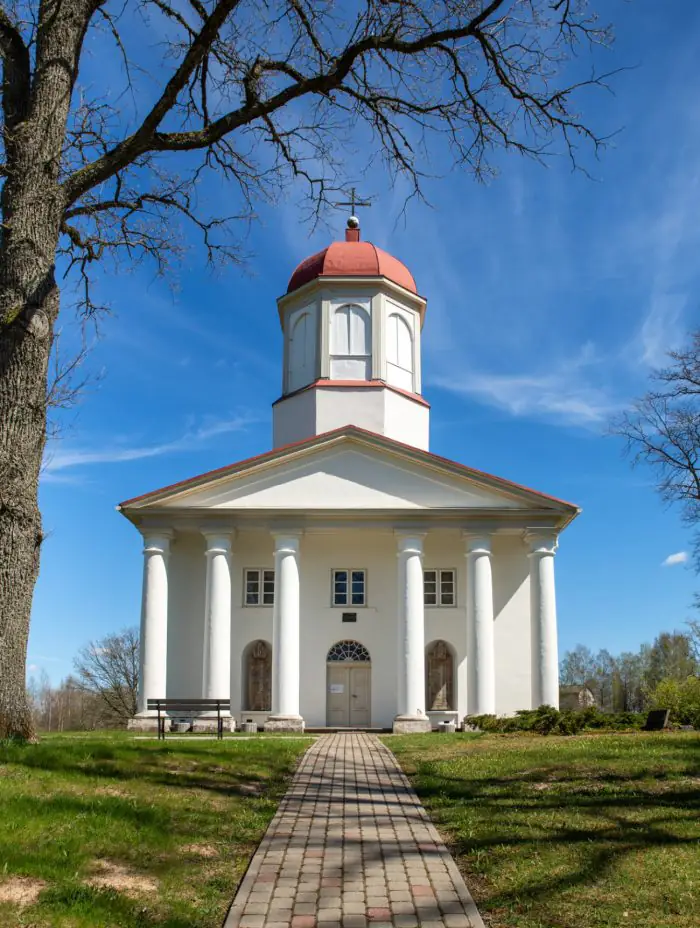
facebook.com/visitSmiltene
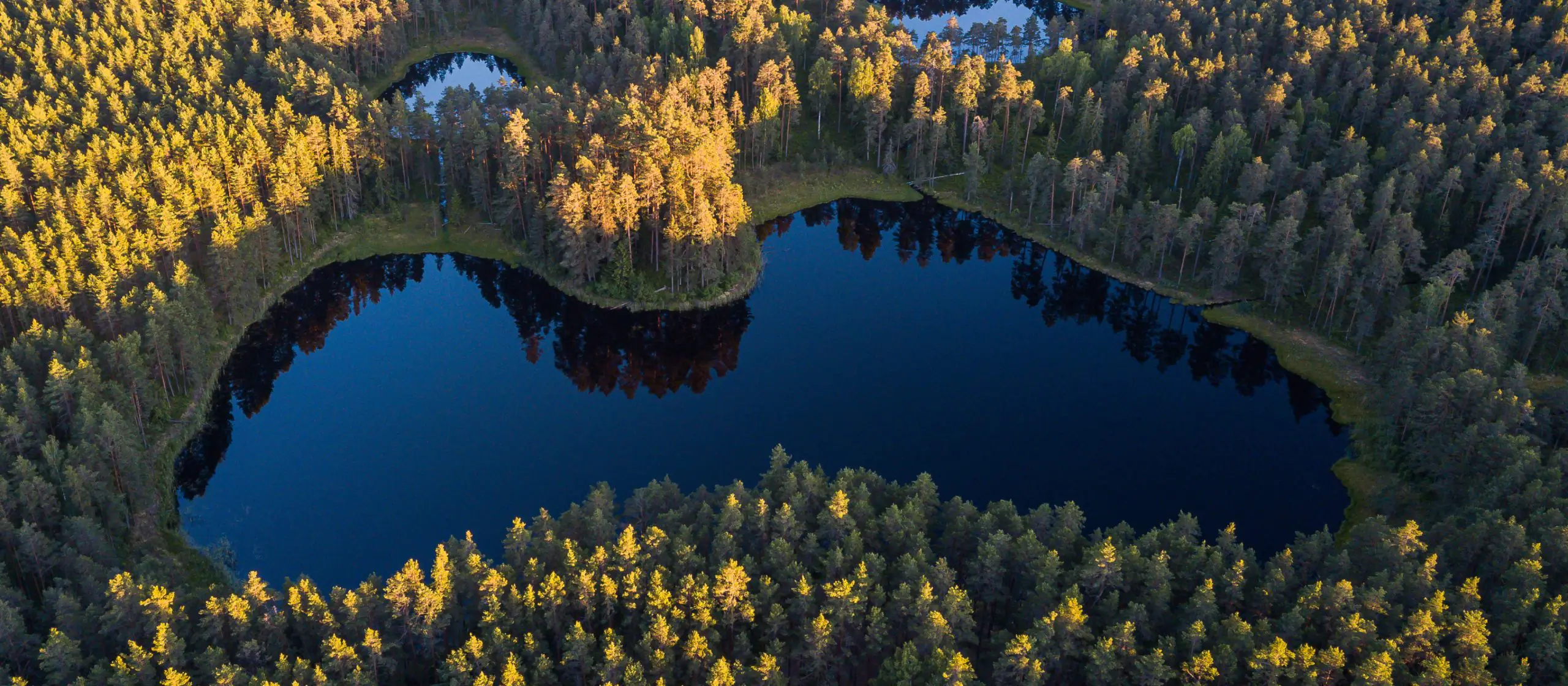
Nature
In Latvia they respect hemp and make many things from it. You can experience almost all the charm of this plant on a “hemp walk“. During the tour you will learn about its cultivation, collect sprouts for a drink, taste and run through the intoxicating hemp field. See, enjoy, smell, explore and finally drink extraordinary hemp tea.
The town of Smiltene has a landscaped park with an artificial waterfall and reservoir. From here you can hike several kilometers to several picturesque lakes in the middle of a pine forest. Among them there is a small lake Salainis, which from a certain angle resembles a map of Latvia.
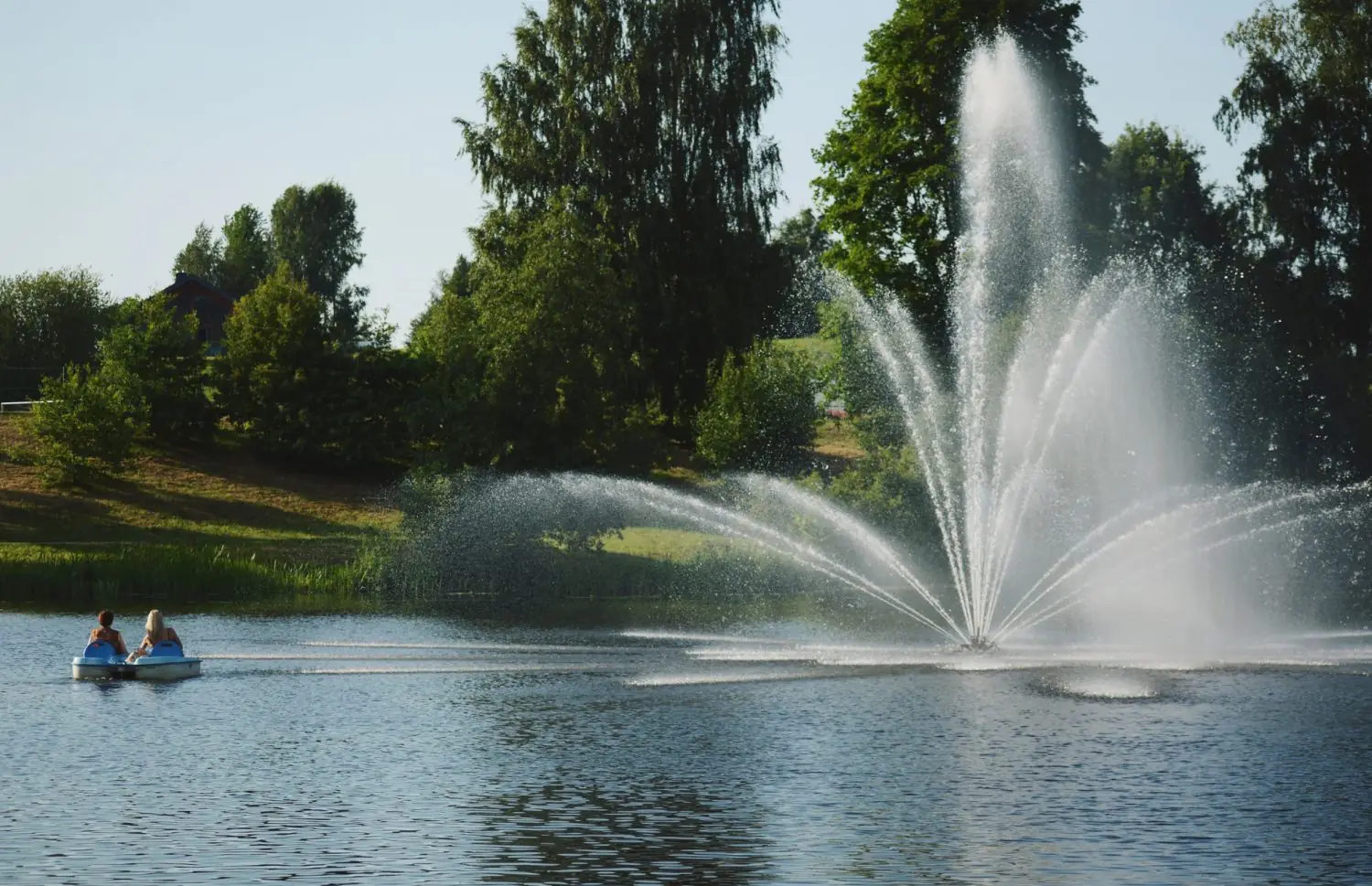
facebook.com/visitSmiltene
The cliffs in Rauna look spectacular against the backdrop of the winding river and high hills. One of them is so remarkable that it is even nicknamed Staburags—after the legendary cliff on the bank of the River Daugava, which went under water due to the construction of the Plavinas hydroelectric power plant in 1966. The cliff in Rauna is covered with moss and water constantly drips from it. In winter it gradually freezes, which turns the rock and moss into a large block of ice.
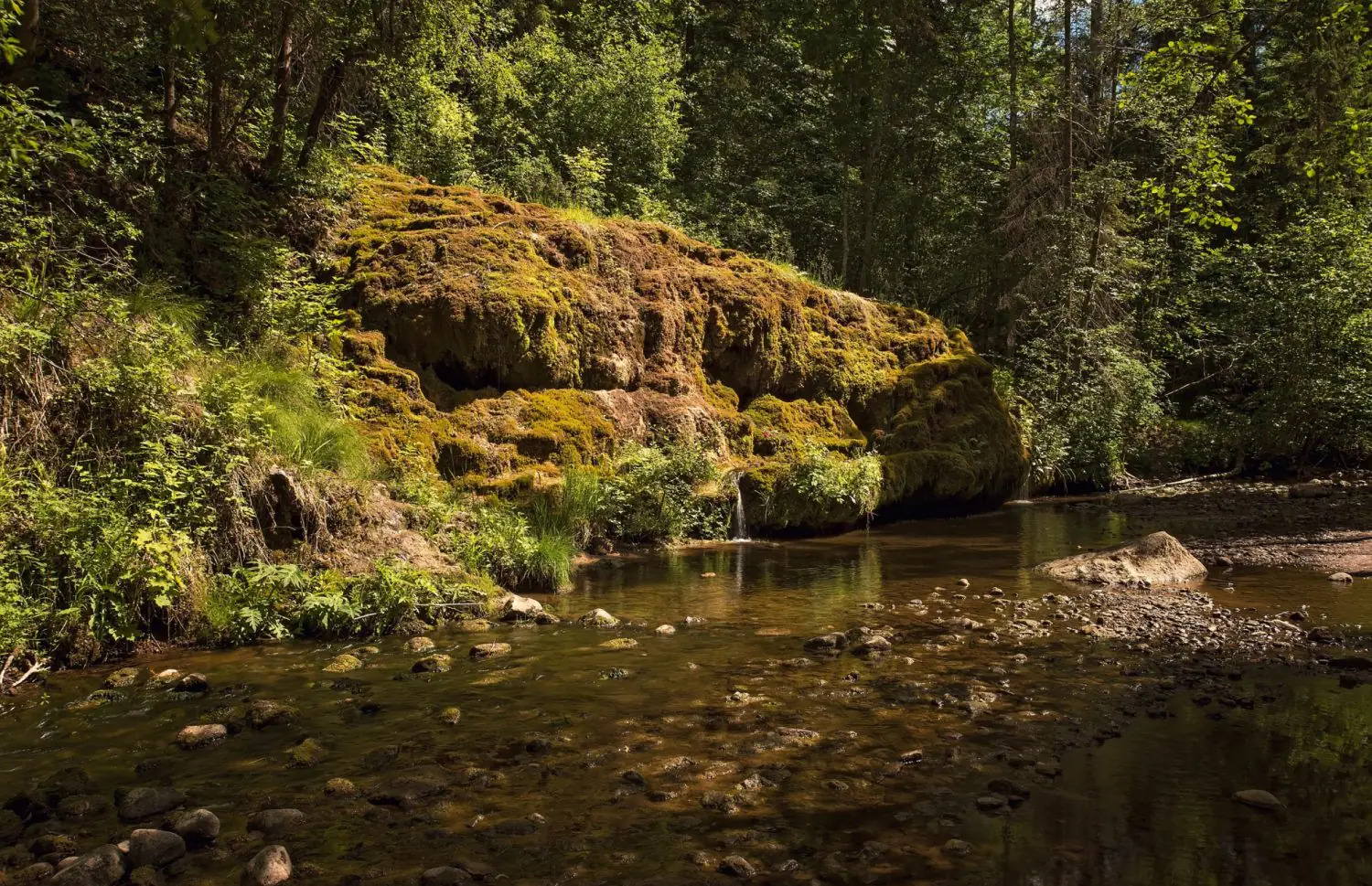
facebook.com/visitSmiltene
The Vecsautiņi spring looks unusual in the middle of dark peat waters near Smiltene. The water gushes out of the ground and raises white sand along with the silt. It is interesting to see bubbling light circles appear on a small body of water the color of strong tea.
Where to eat
In the heart of Smiltene, a few meters from the Lutheran church and the bus station is El Bodegon cafe and shop. It is a family business with its own winery. Here you can taste local wine made from berries and fruits, and have coffee with dessert. Various herbal teas, candies, jams and other natural products are available for sale.
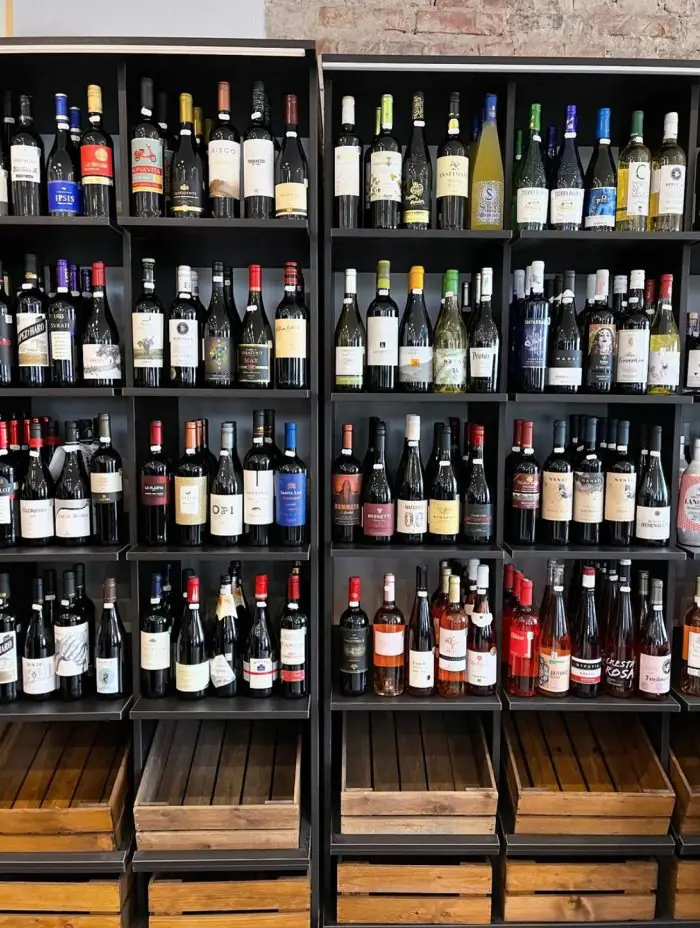
instagram.com/ziemeluvins
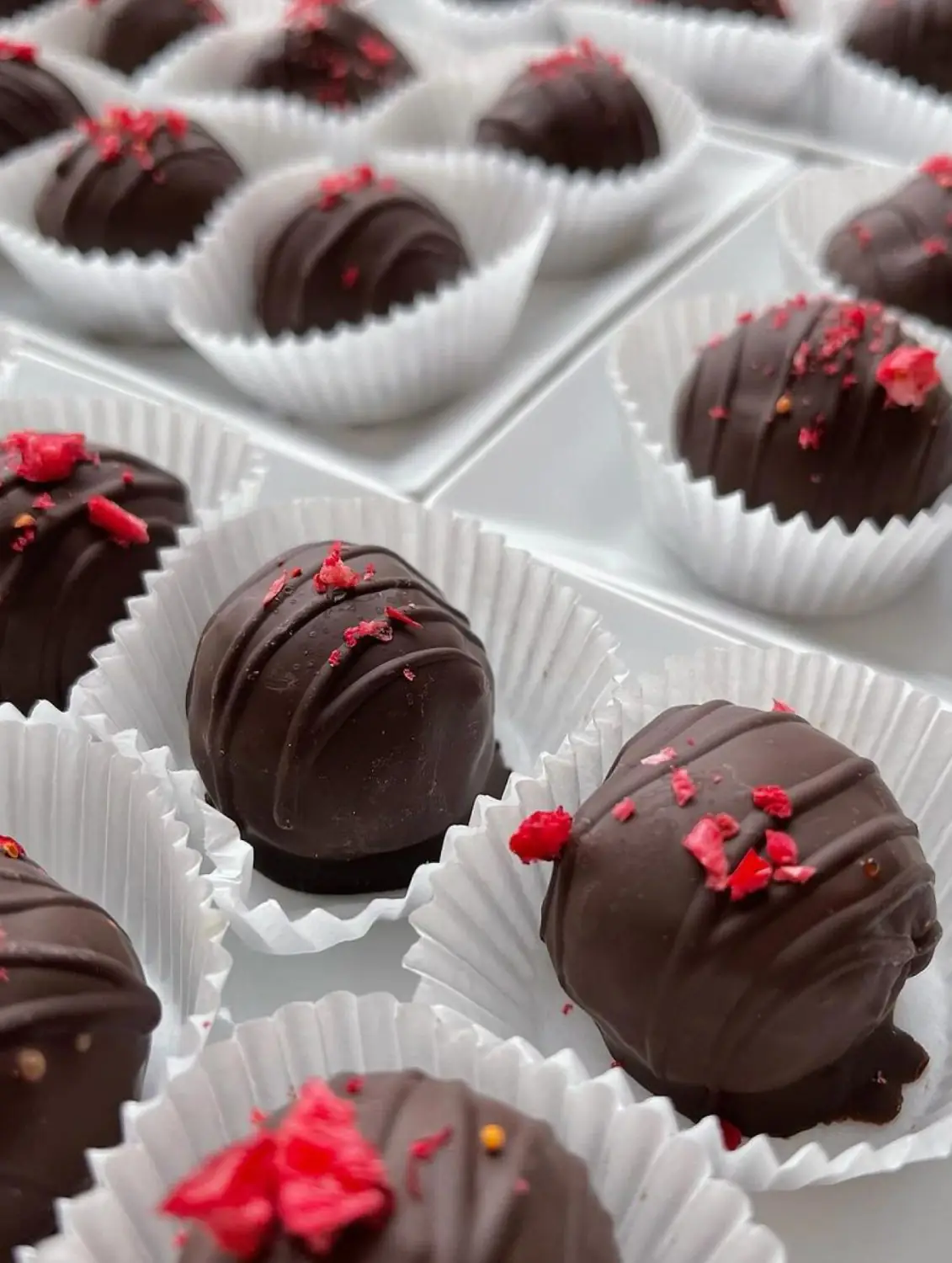
instagram.com/ziemeluvins
Jaunā Rauna Cafe is known for its unusual dishes, which are made on special days. For example, they offer garlic cheesecake and ice cream with the same flavor. If you are not ready for such exotics, you can order a standard business lunch. The cafe is located in the very center of Rauna, not far from the castle and the church.
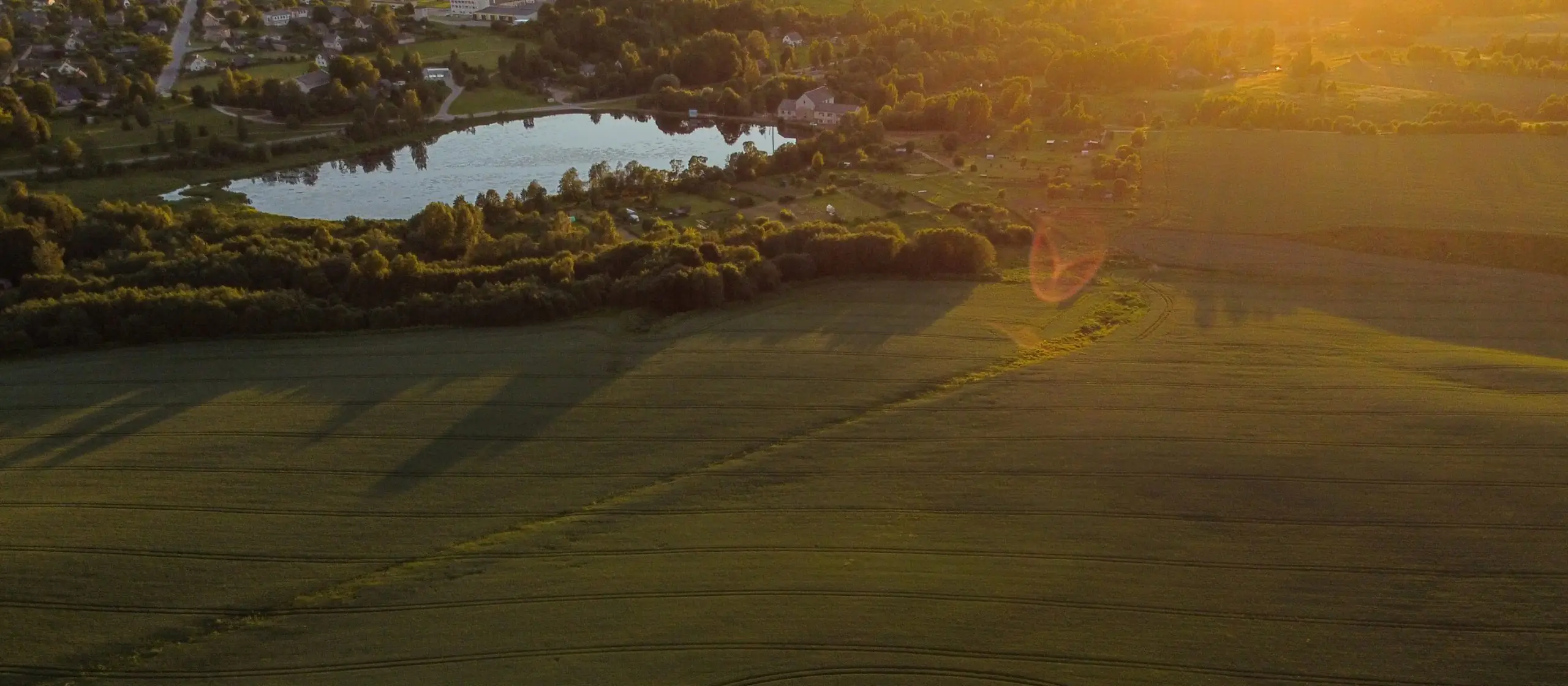
Local products and things
The small Abuls ciderhouse makes craft alcohol from various apple varieties, including wild apples from local orchards. The cider has been handcrafted here since 2000. The owners invite you to visit the cellar and taste their products.
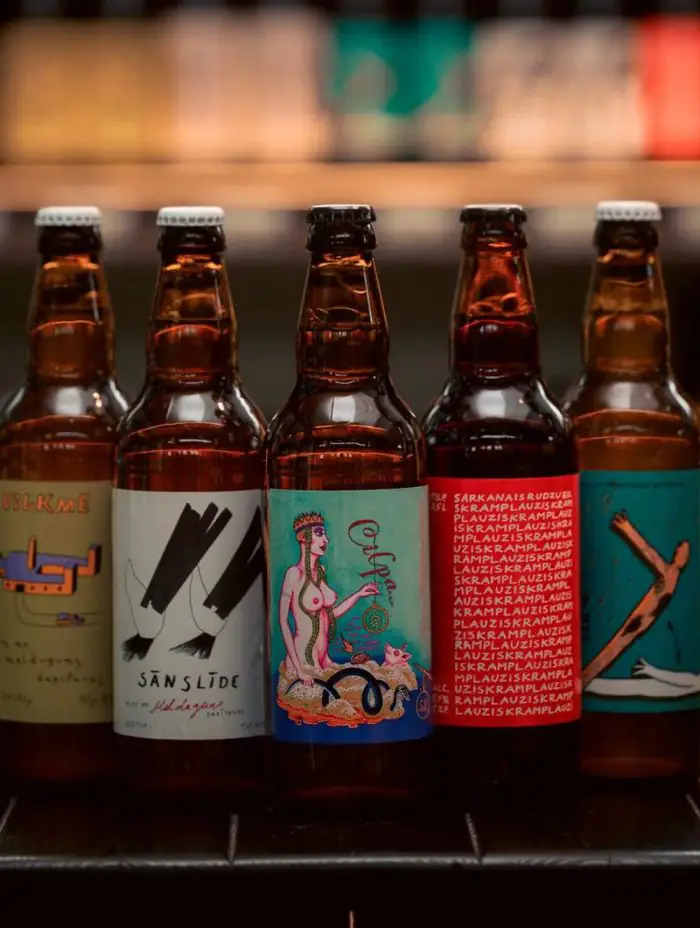
instagram.com/malduguns_alus
Rauna is home to one of Latvia’s most famous craft breweries—Malduguns. Their beer can be found all over the country and is in great demand. Here they produce both well-known varieties and limited edition ones.
For example, there is a beer with the addition of birch and grape juice. The producers have made their own merch and sell T-shirts with prints of the most famous beer labels. In local stores you will find almost the full range of the brewery.
Aivars and Ārija grow berries in their own Mežnoras garden and make wine from them. There are only a few places in Latvia where you can taste it. One of them is Rauna. The most popular varieties are made from strawberries, cherries, raspberries and currants.
Birzi sparkling birch juice is sold all over the country. It is produced on the Kainaiži farm a few kilometers from Smiltene. This is a real birch kingdom! The Labanovski family makes many things from the sap of the trees: alcoholic balms, moonshine, syrups, carbonated drinks, air fresheners, extracts.
The farm has an artificially planted grove with maples, hazels and birches—all of these trees are used to produce sap in the spring. On request, you can book a tour of the production facility.
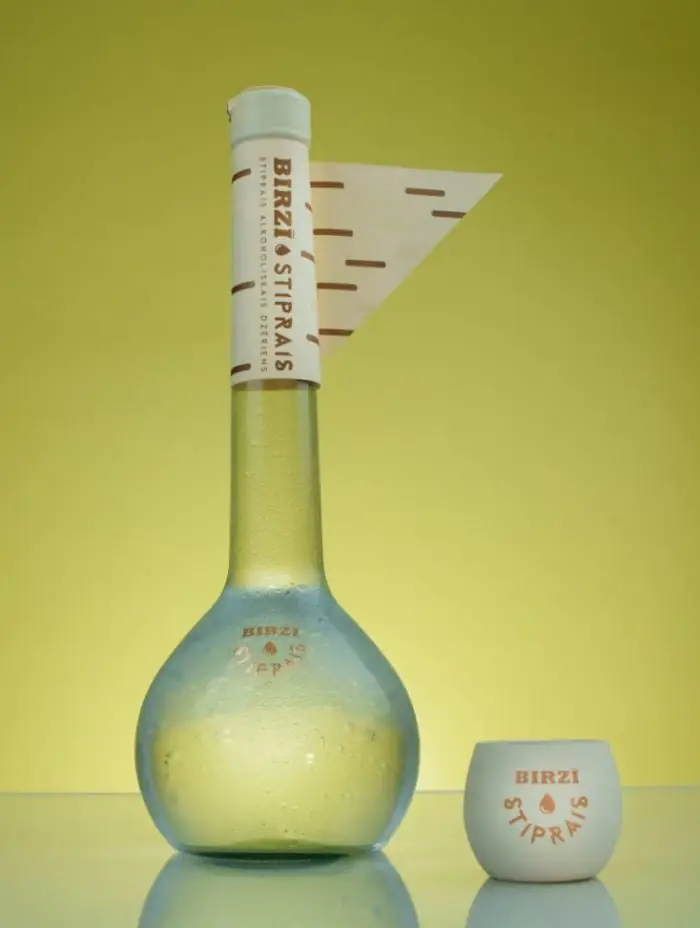
instagram.com/birzi.lv
The cheese and pasta factory in Rauna offers a wide variety of original products. Try the homemade pasta with mushroom, jalapeño, spinach, hemp and even clover flavors. Cheeses here are also unusual: crumbly cheeses with different flavors and even in the form of dense balls—a Latvian interpretation of the Turkic qurut.
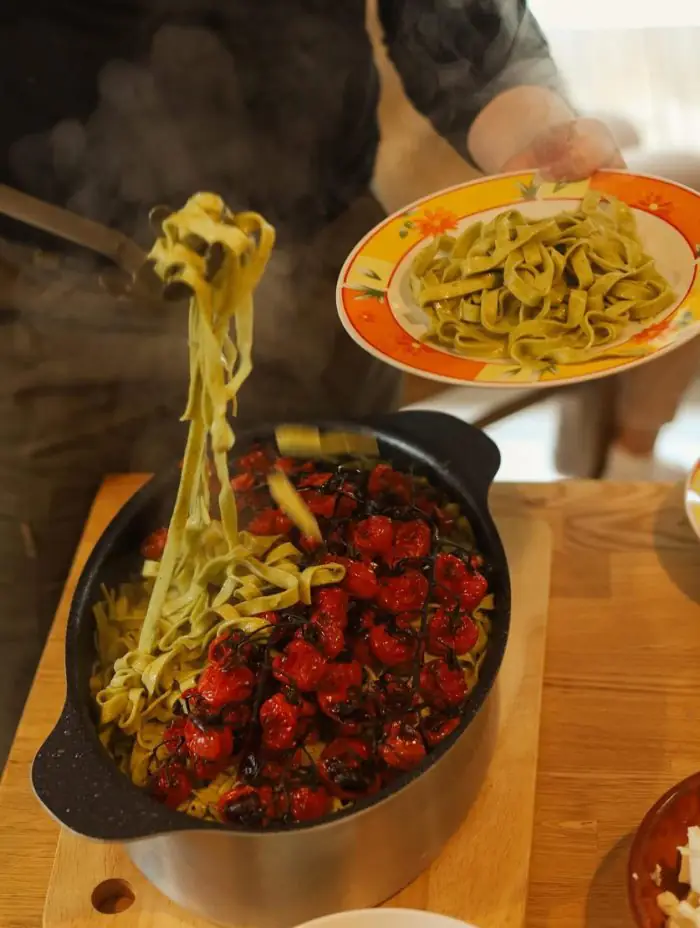
facebook.com/sierarazotne
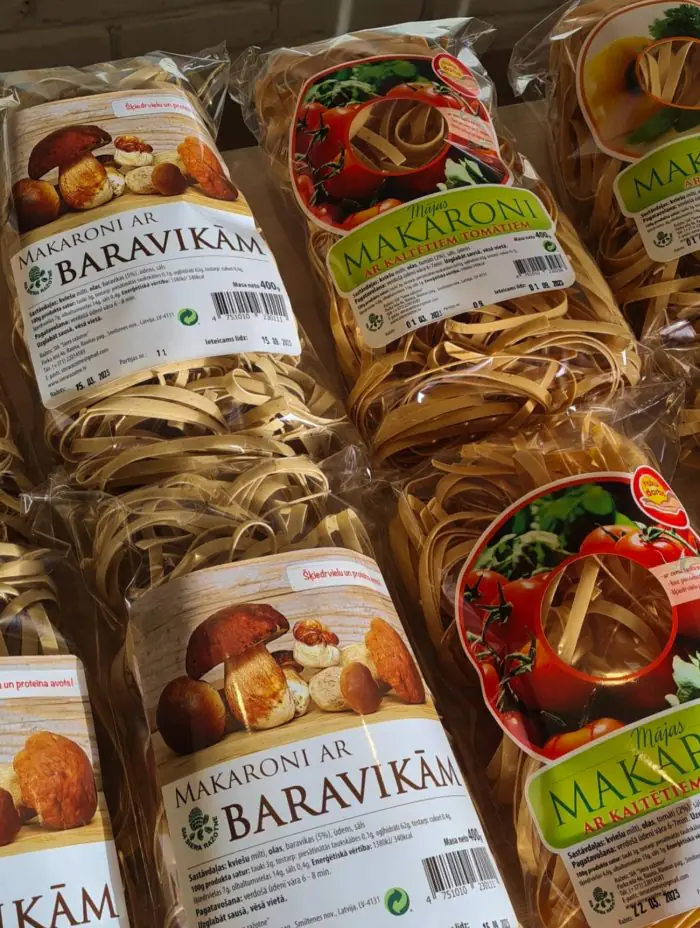
facebook.com/sierarazotne
The interactive bread museum at Kukaburra farm will give you the opportunity to feel like a baker. You will see not only the finished product, but also the process of its creation: from kneading the dough to baking. The owner Jānis Krieķis will tell you about the traditions of Latvian bread making, as well as show you his own collection of antique items: old furniture, agricultural tools, kitchen utensils, clothes, shoes, handicrafts and other things. Visits must be arranged in advance.
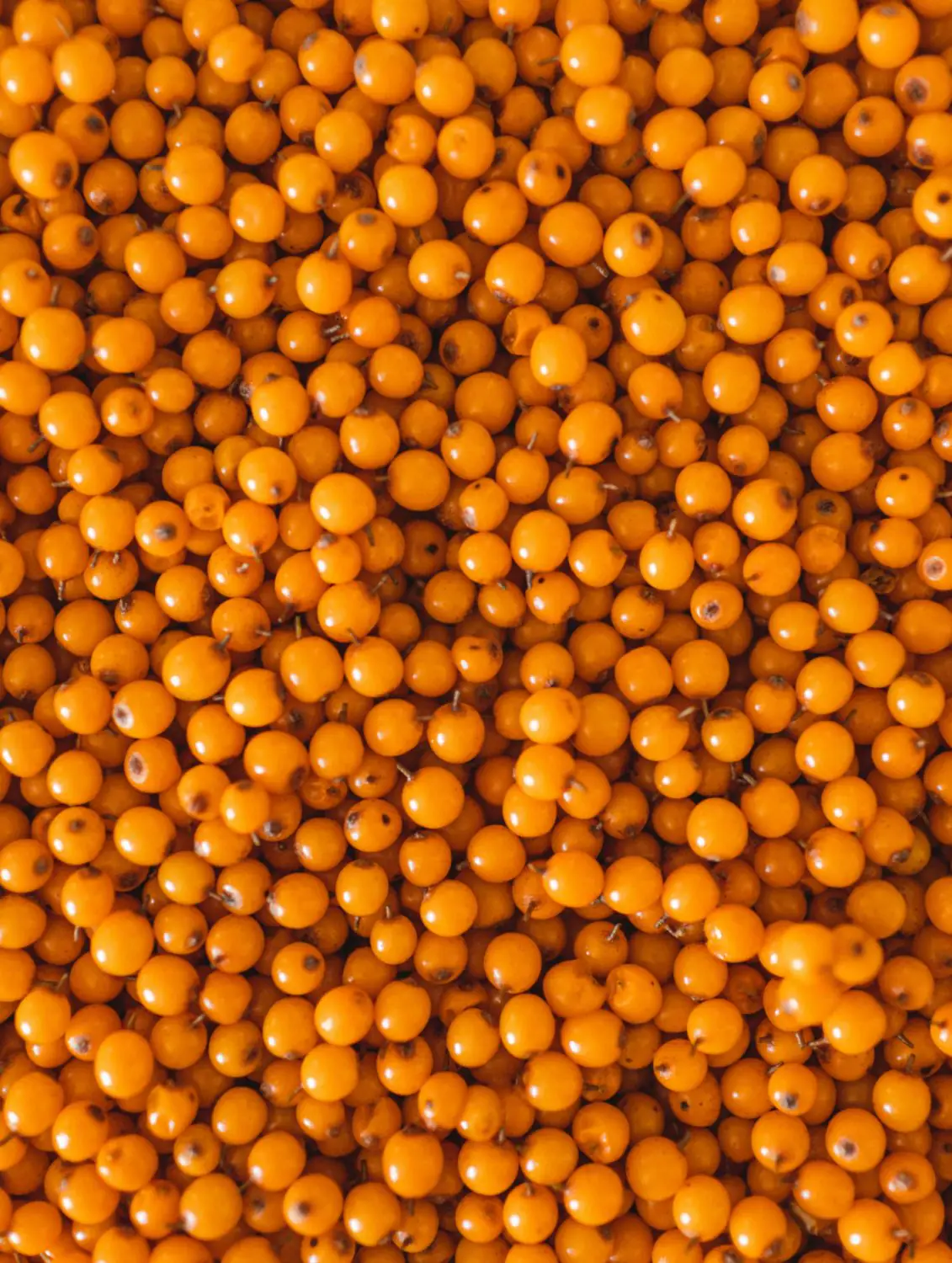
Liepūdrupi farm has a farm where all kinds of edible and non-edible products are made from sea buckthorn. Here you can try yourself as a craftsman who makes various wonders from this berry. There are sea buckthorn lollipops and marmalade for those with a sweet tooth, and craft soaps, scrubs, oils and other cosmetics for body care.
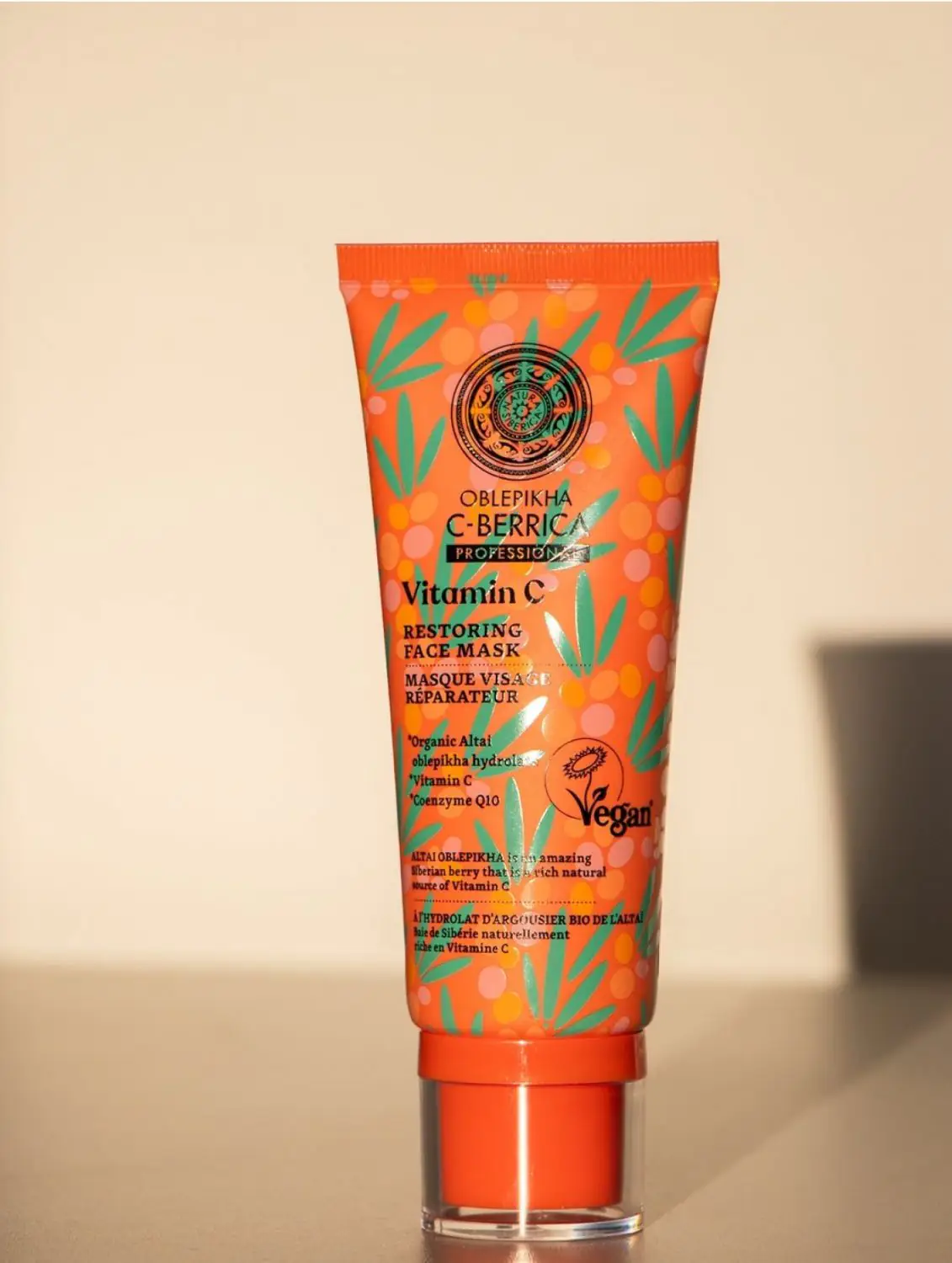
instagram.com/amberfarm.lv
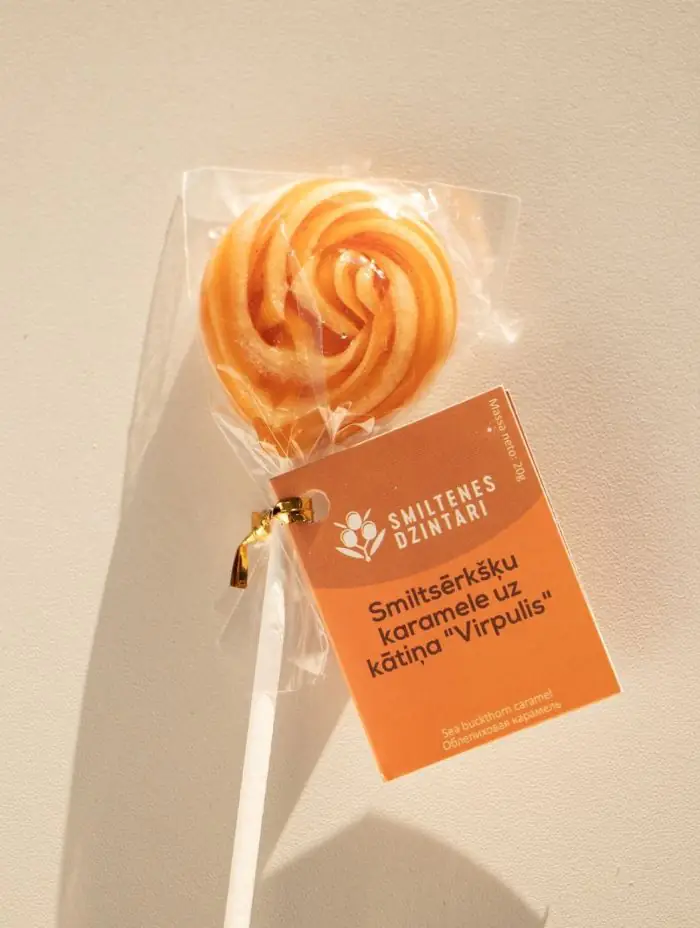
instagram.com/amberfarm.lv
Fans of Latvian ceramics should visit the Raunas ceplis workshop. During the tour you will be told about the process of creating various items from clay. You can also take part in a master class and buy a finished product.
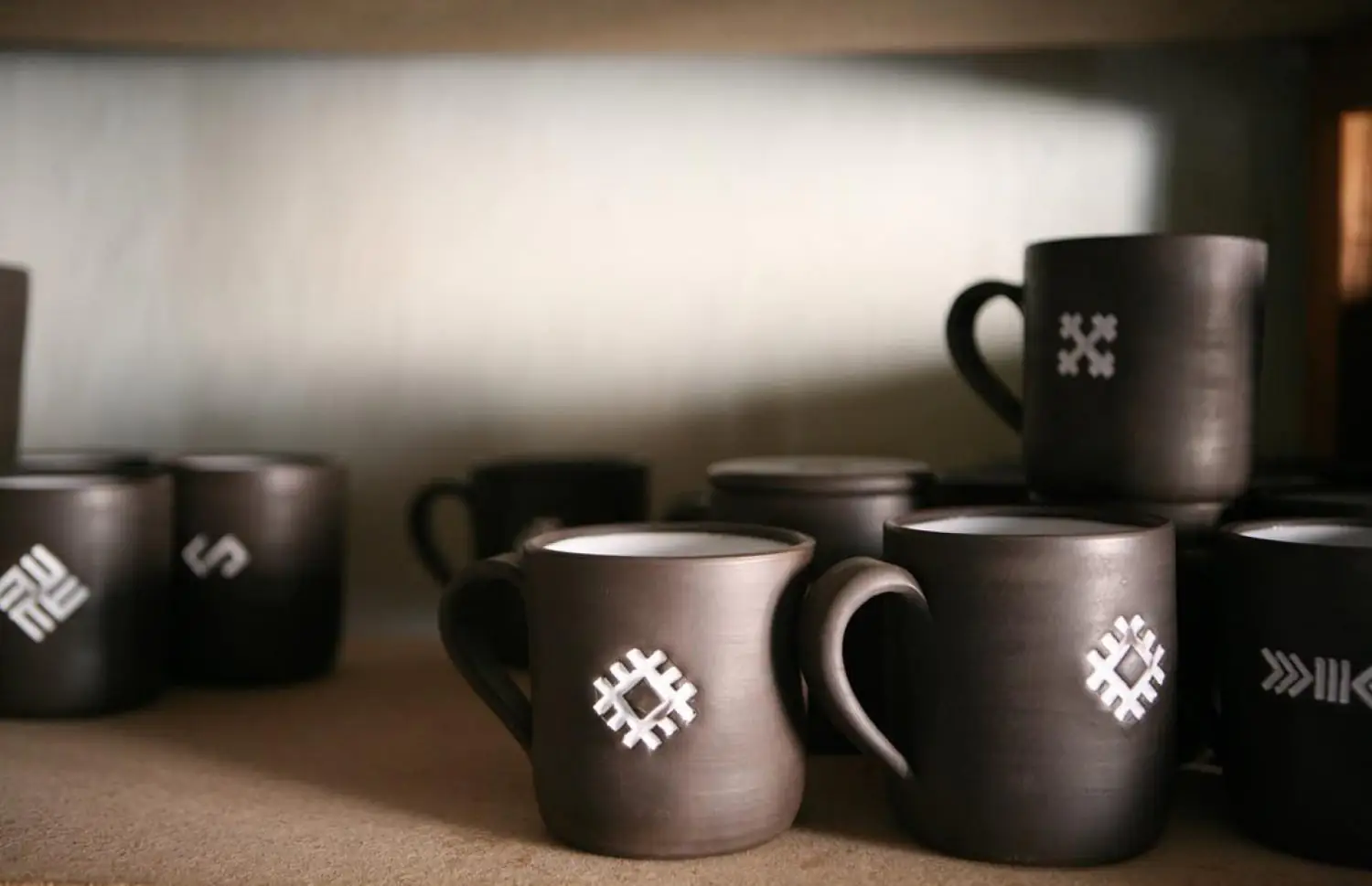
instagram.com/raunasceplis
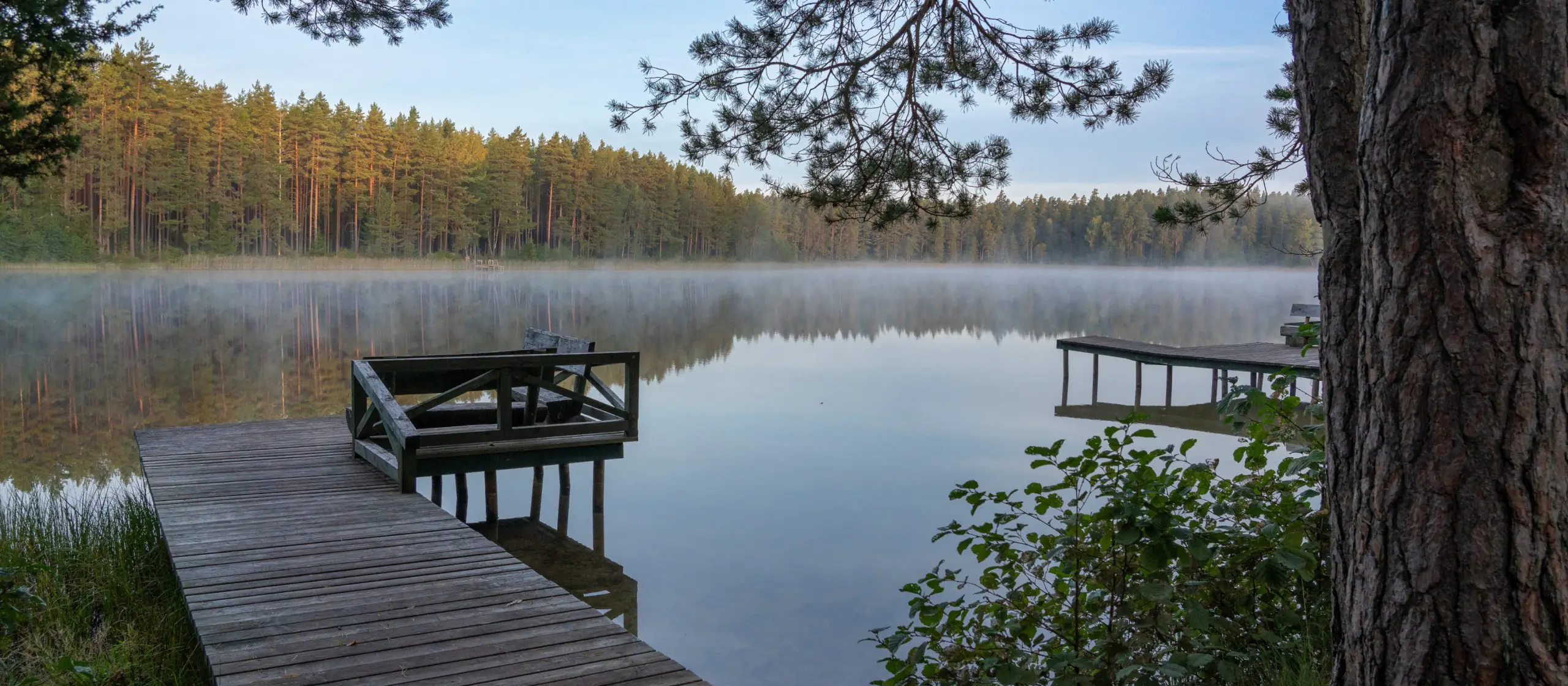
Where to rest
Holiday complex Silmači on the shore of Lake Lizdole is perfect for individual and family vacations. On the territory there are many sports grounds and rental of swimming facilities and various equipment: boats, catamarans, SUP boards, water trampolines, fishing rods. They also offer to rent equipped parking lots for camping.
The Zadiņi organic farming community is a unique community of several families, which can be joined by others. Tourists and interested persons are offered a tour of the farm, a talk about ecological lifestyle, agriculture, consumption, permaculture, and waste recycling. They are also offered an overnight stay in a special hotel and a bath ritual.
You can feel alone with nature in the cozy guest house Rūnēni, five kilometers from the center of Smiltene. There is a fully equipped kitchen, a bedroom, a living room with two double sofa beds and a shower room. It is possible to organize additional beds on mattresses for sleeping.
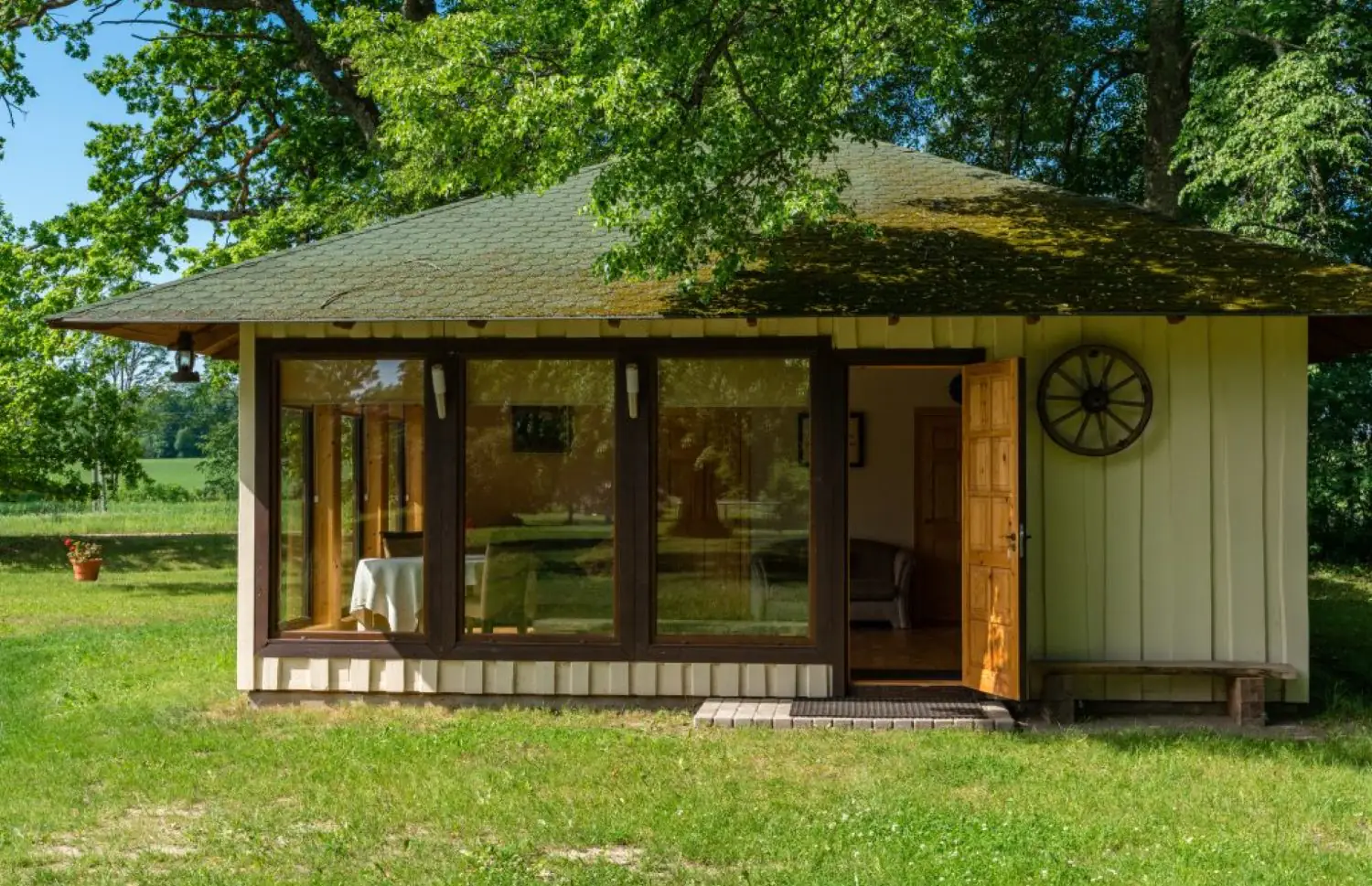
visit.smiltenesnovads.lv
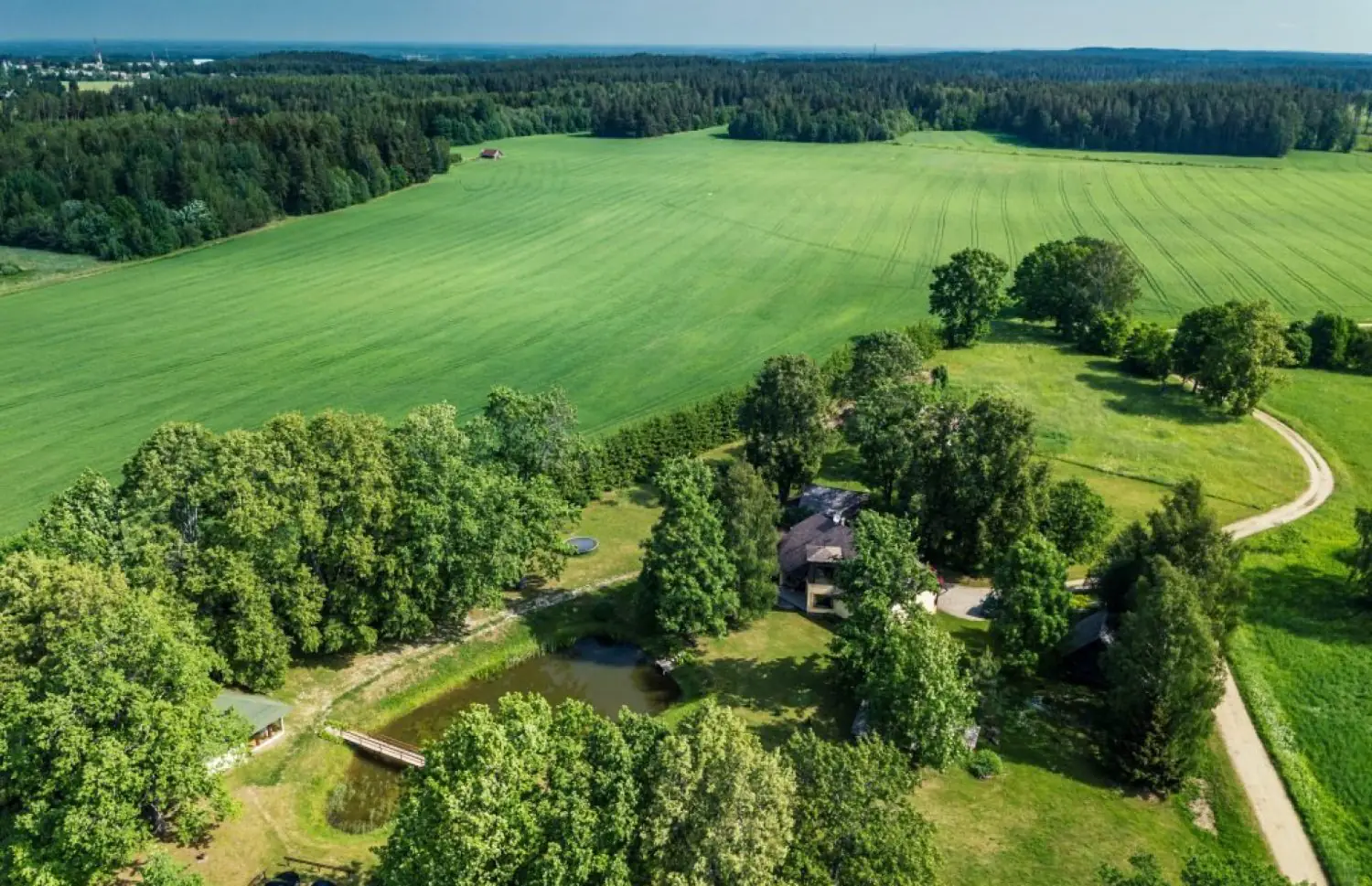
visit.smiltenesnovads.lv


